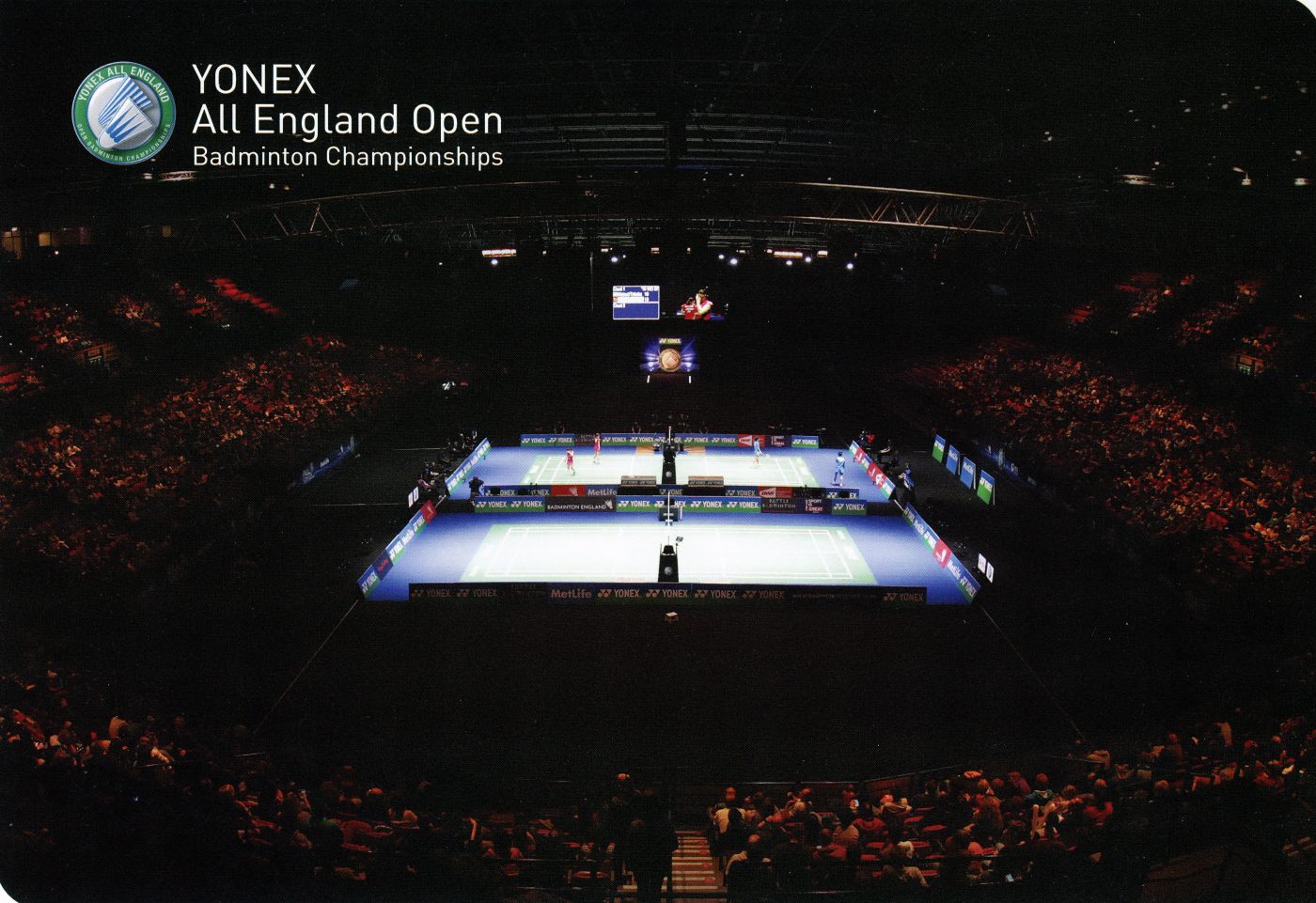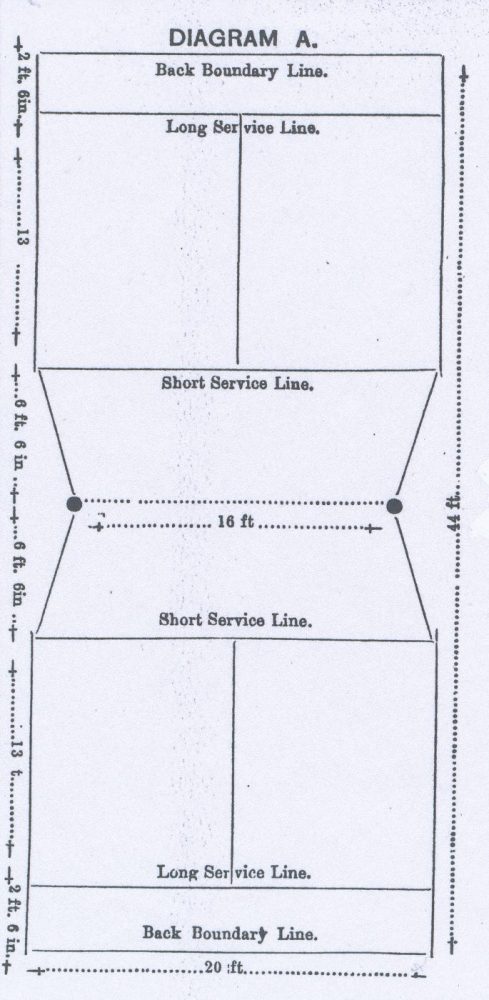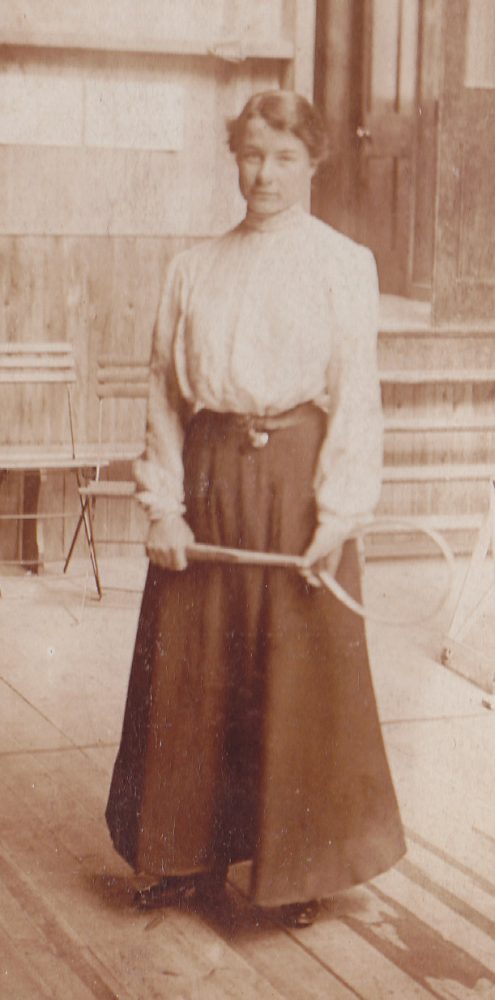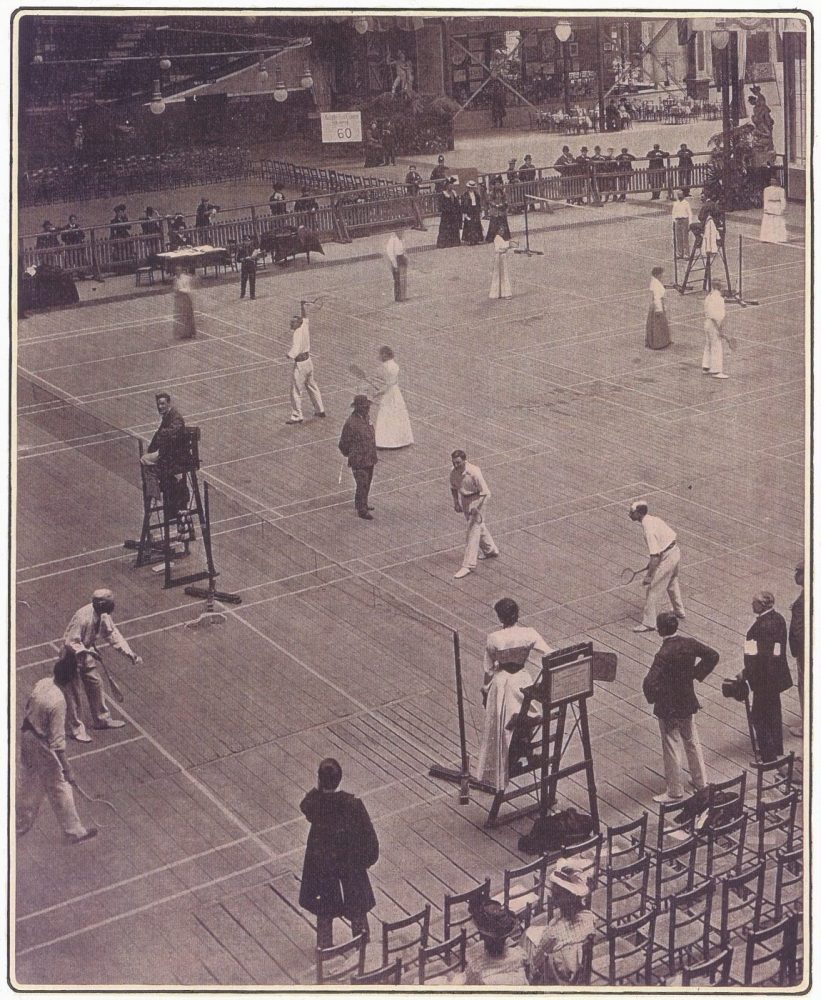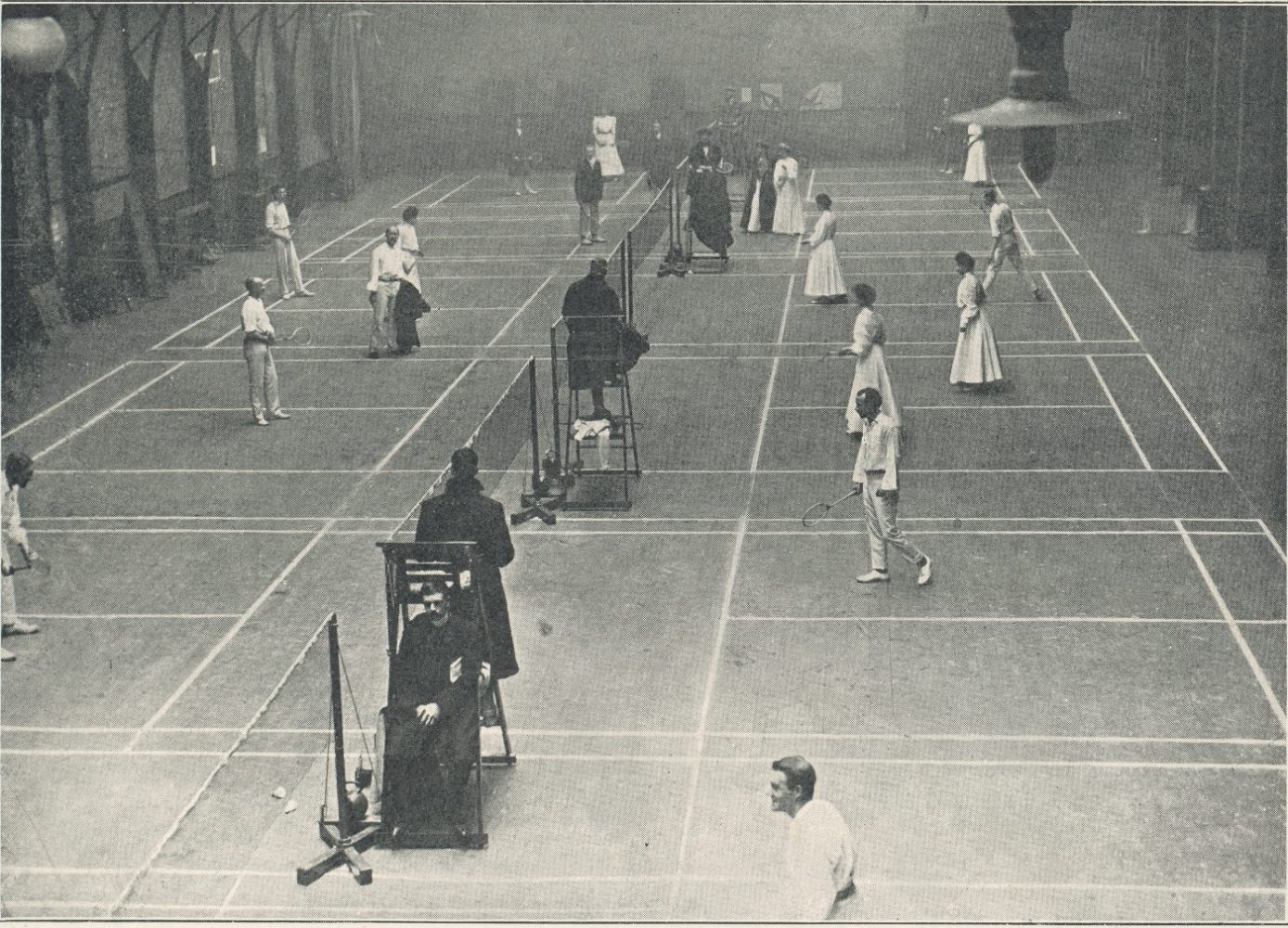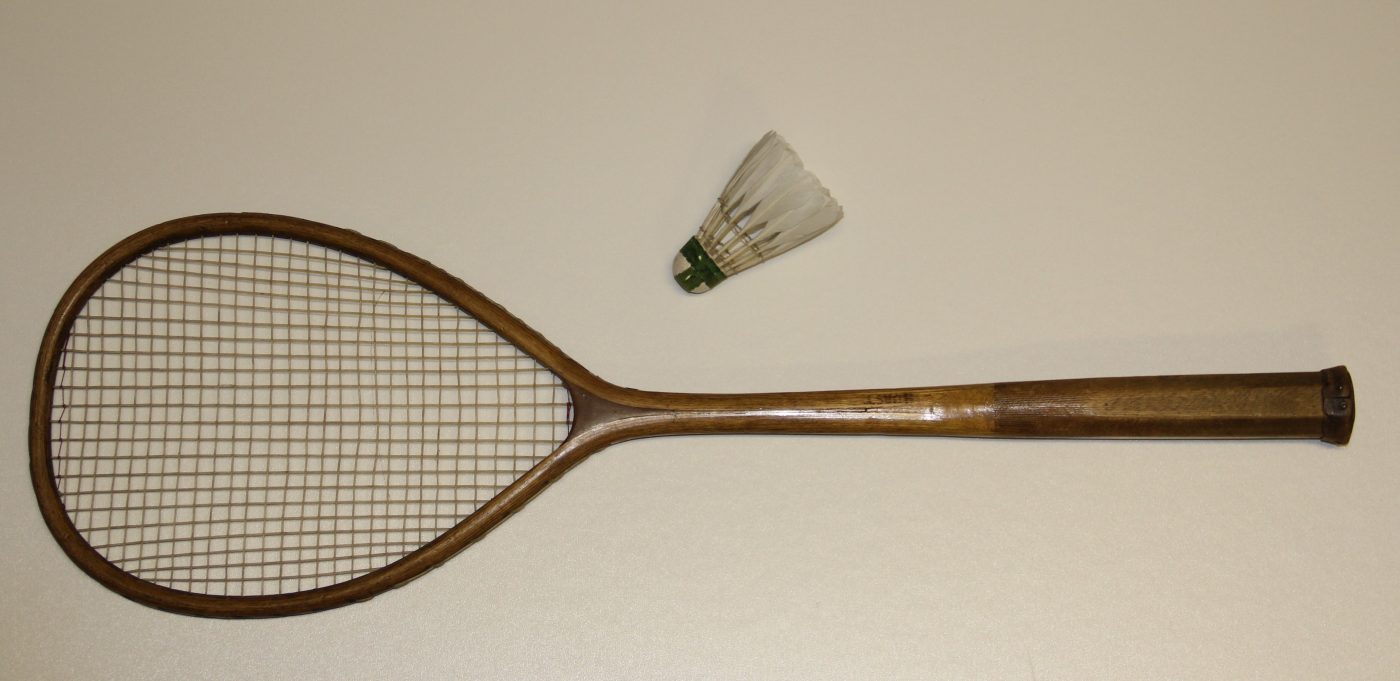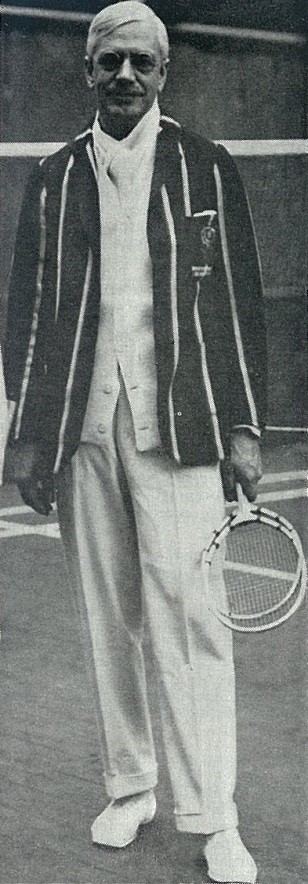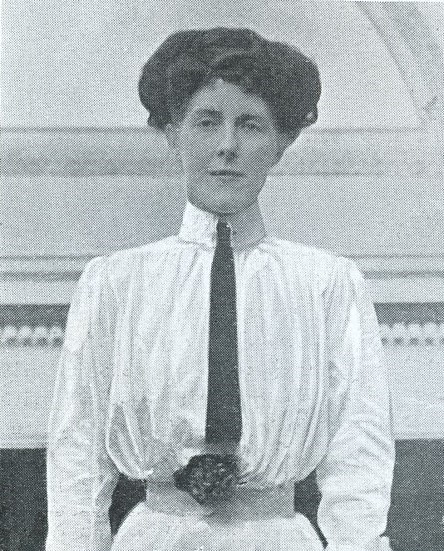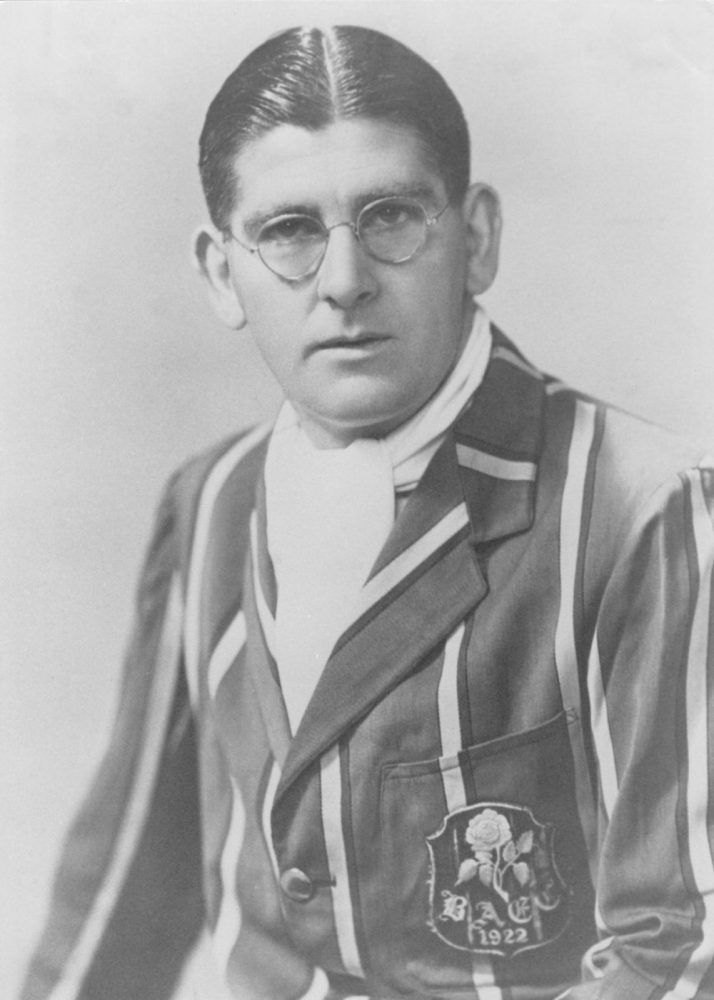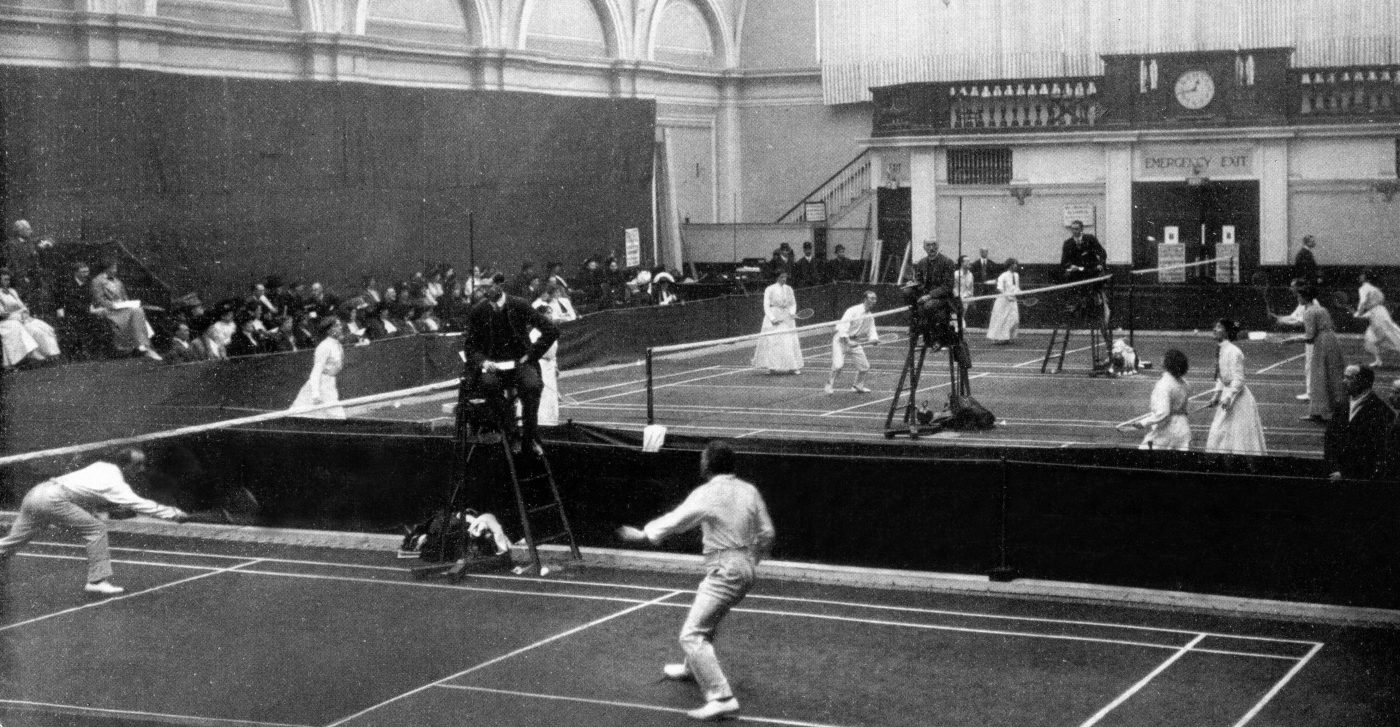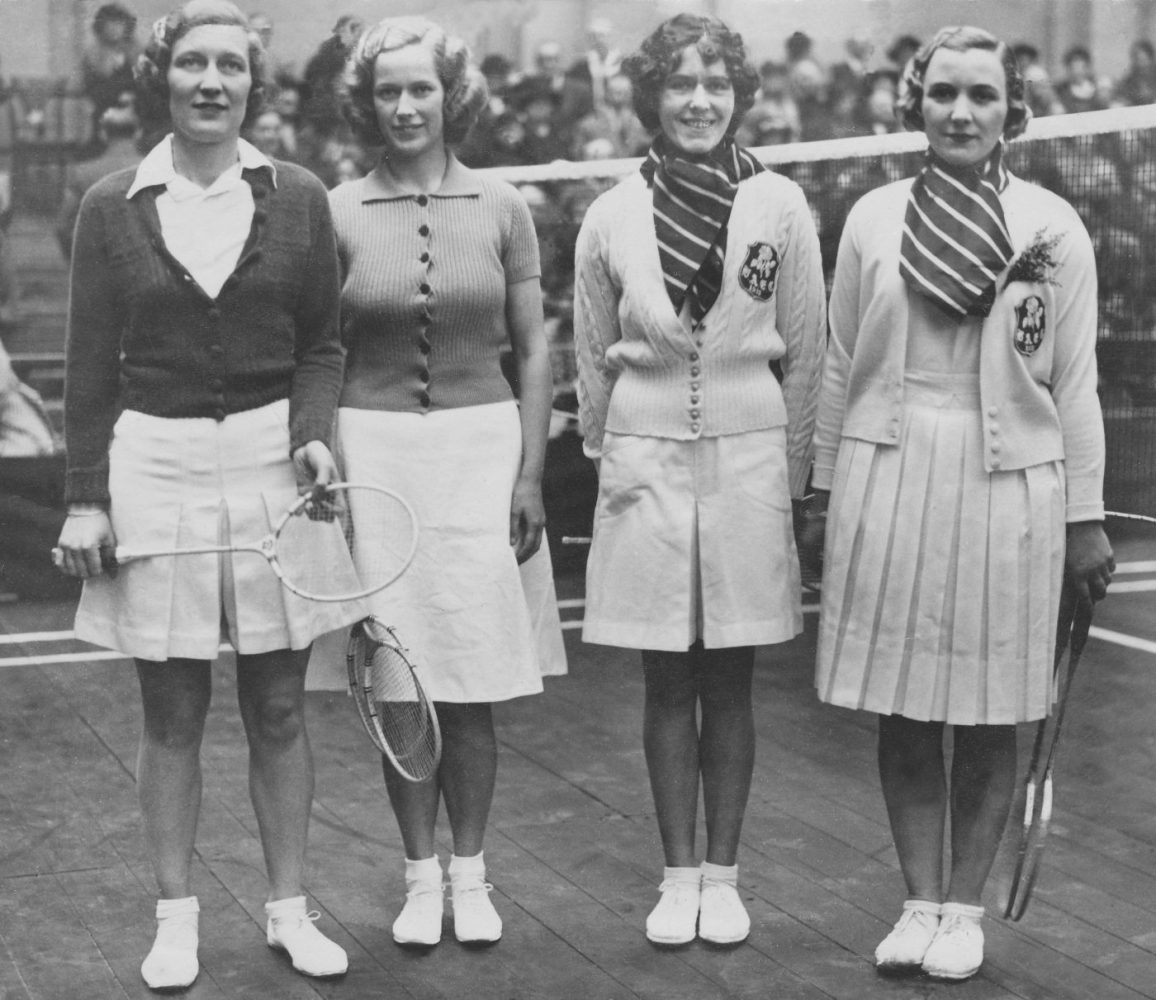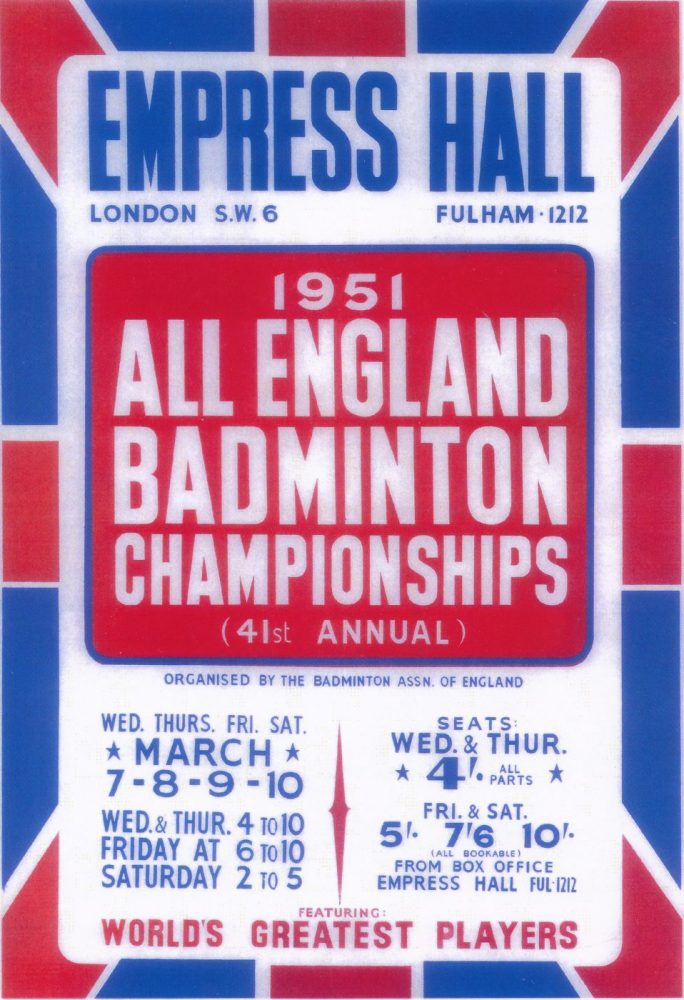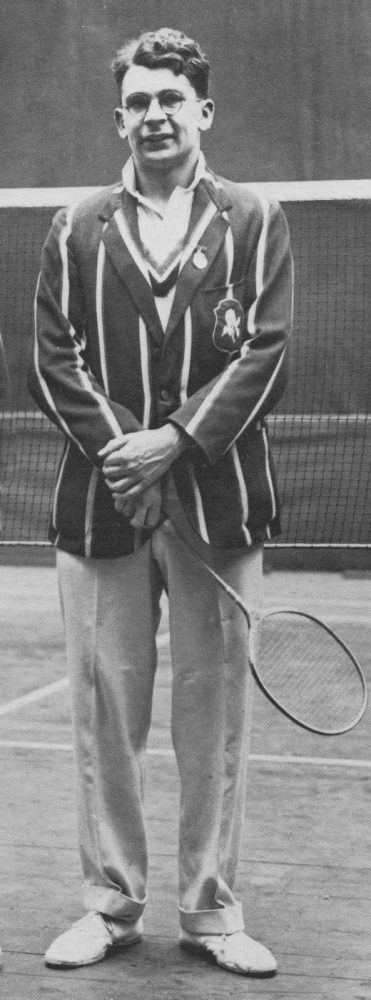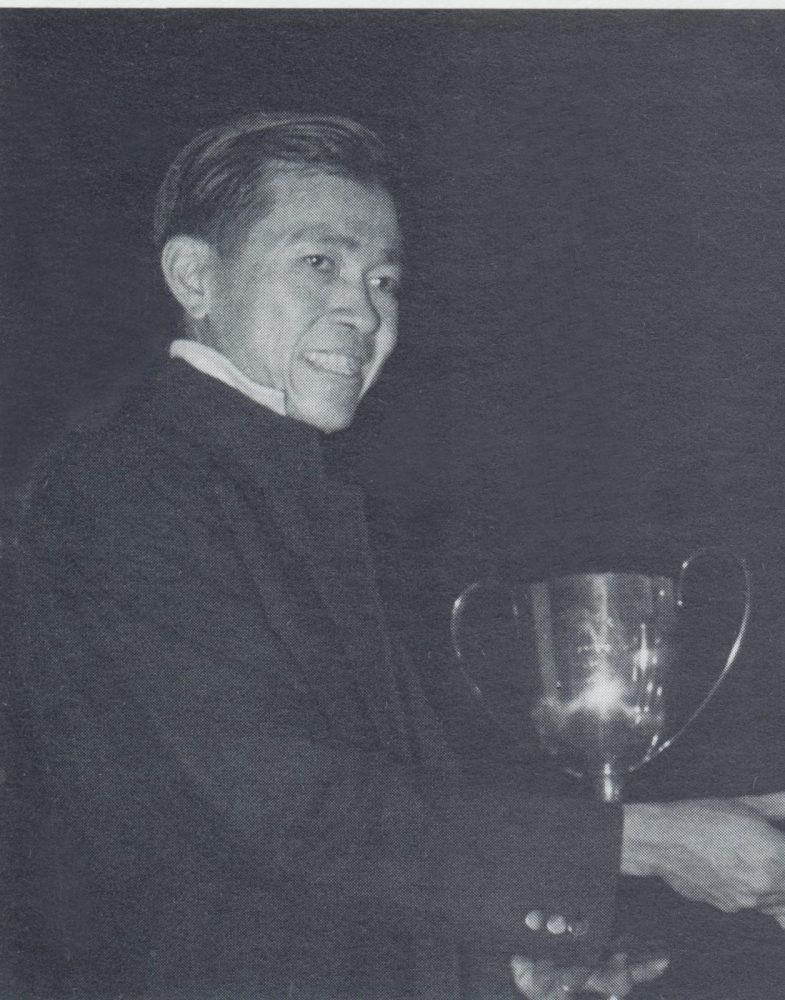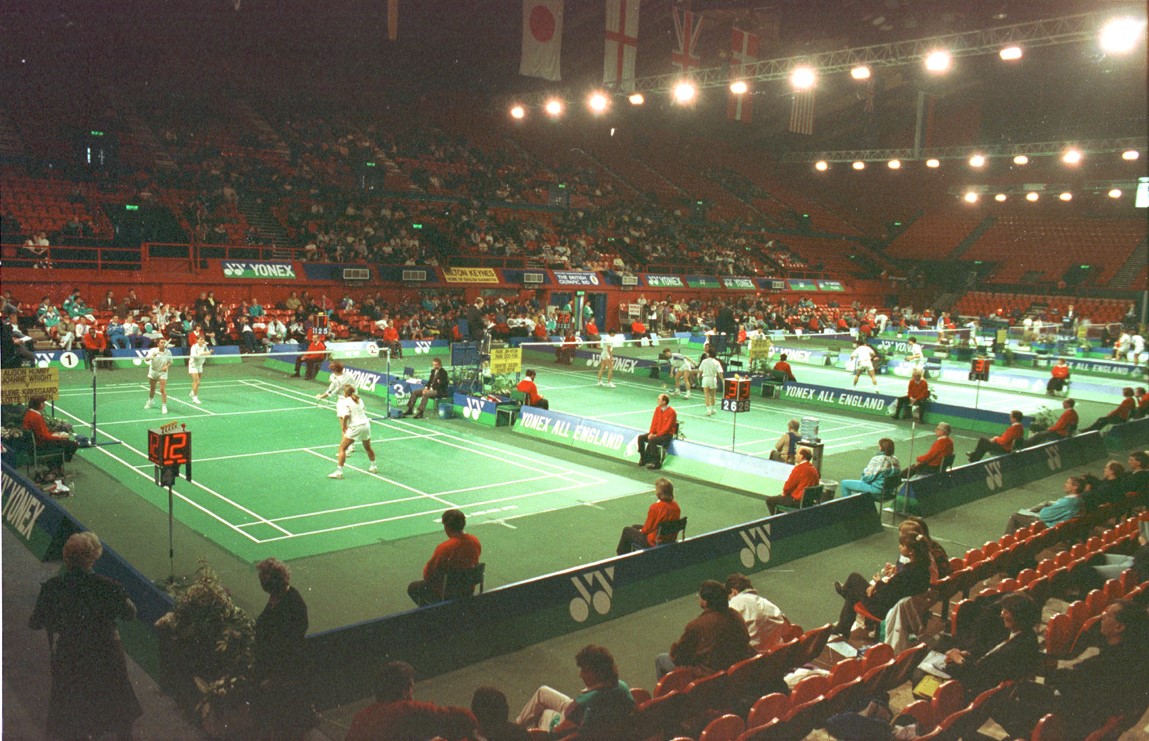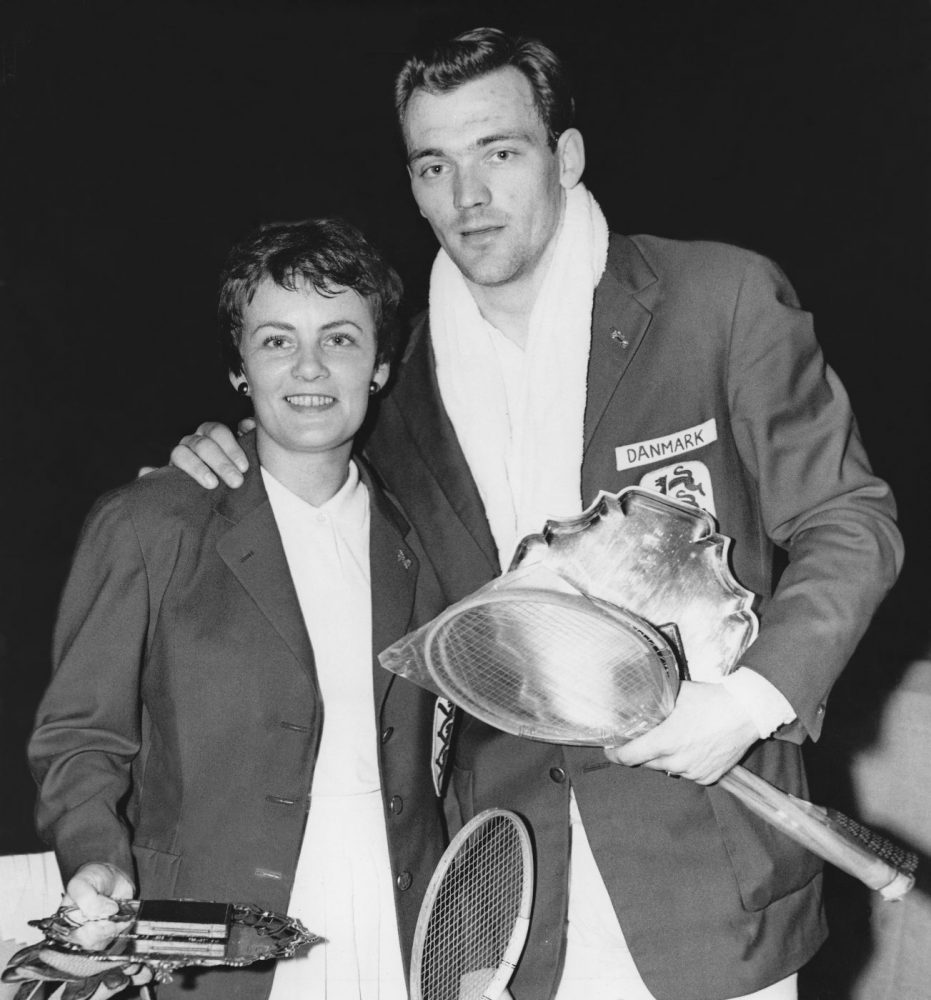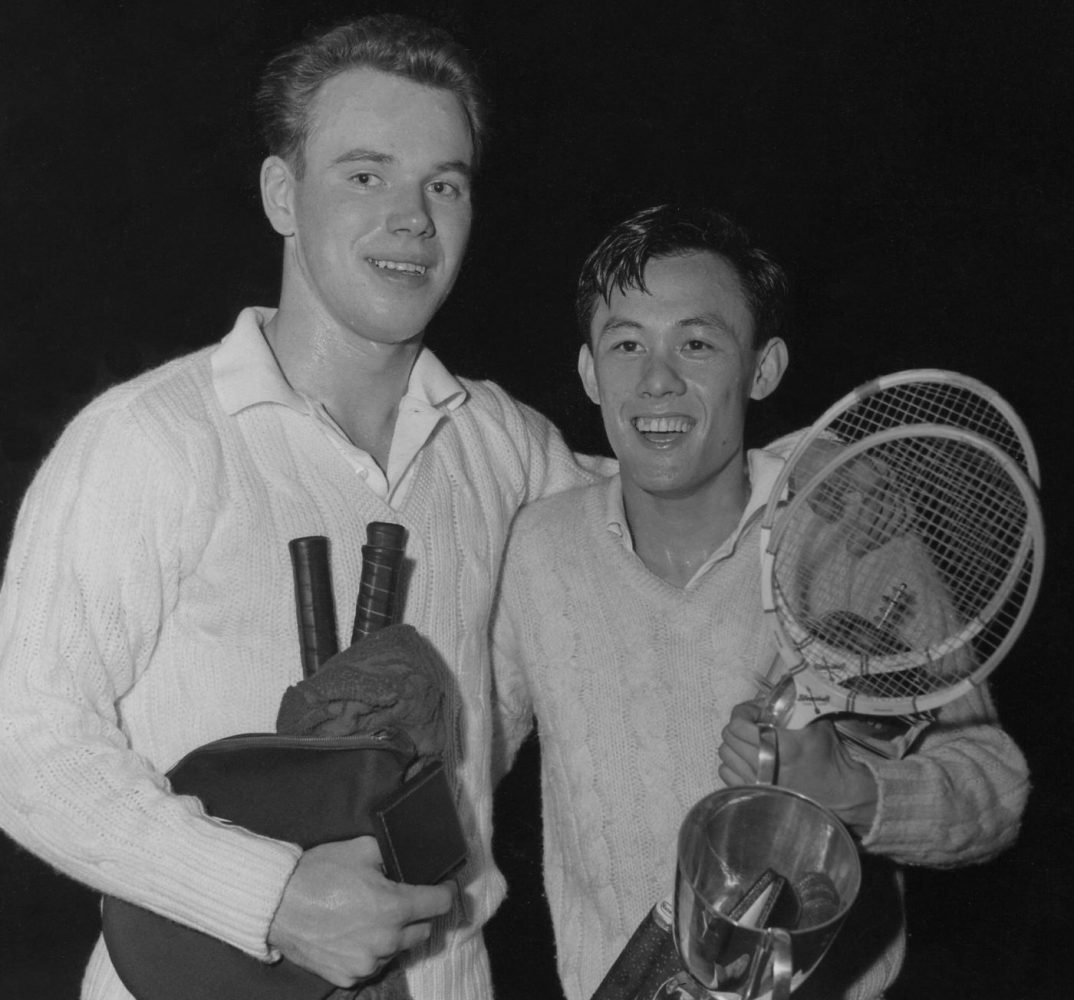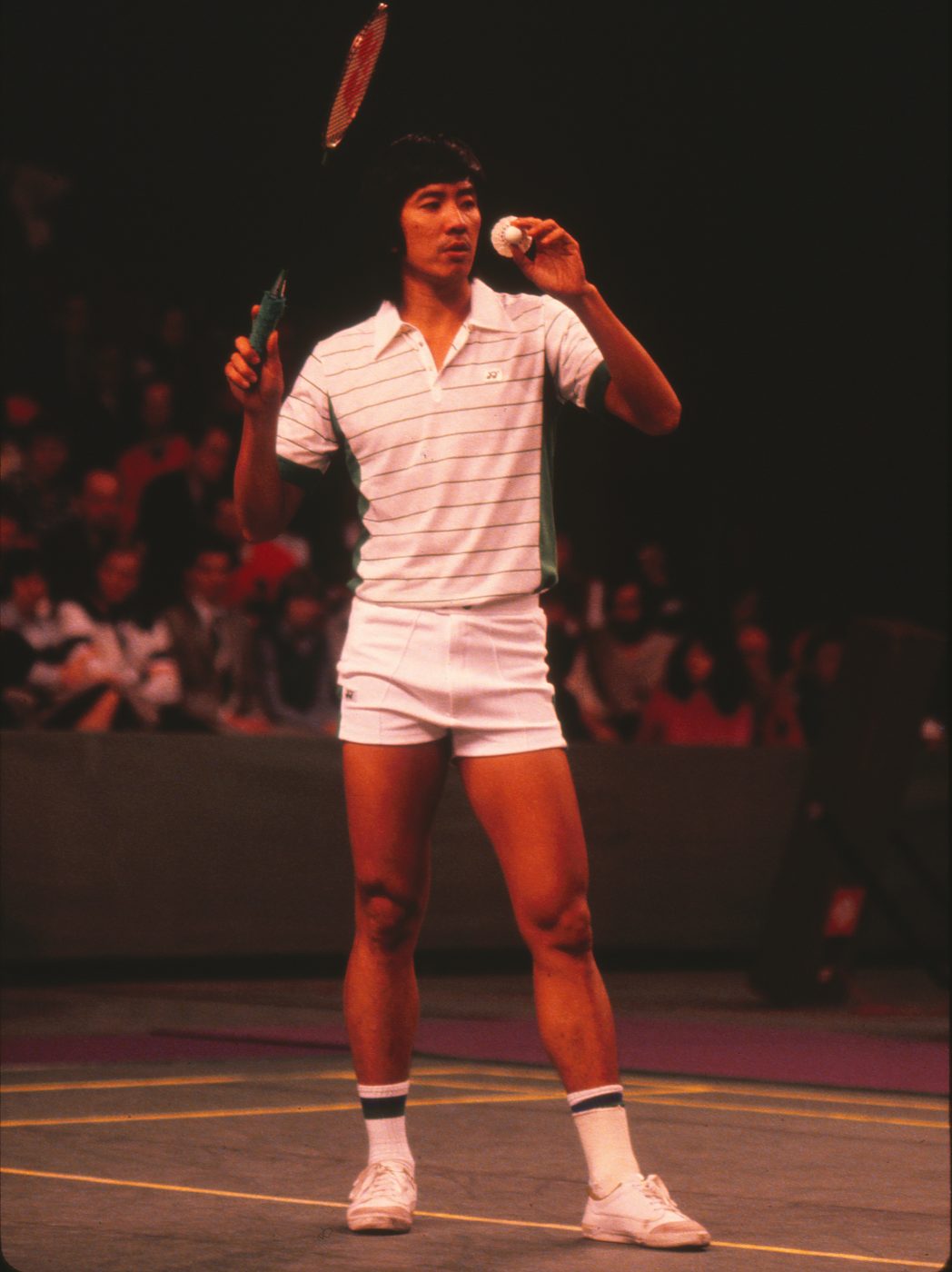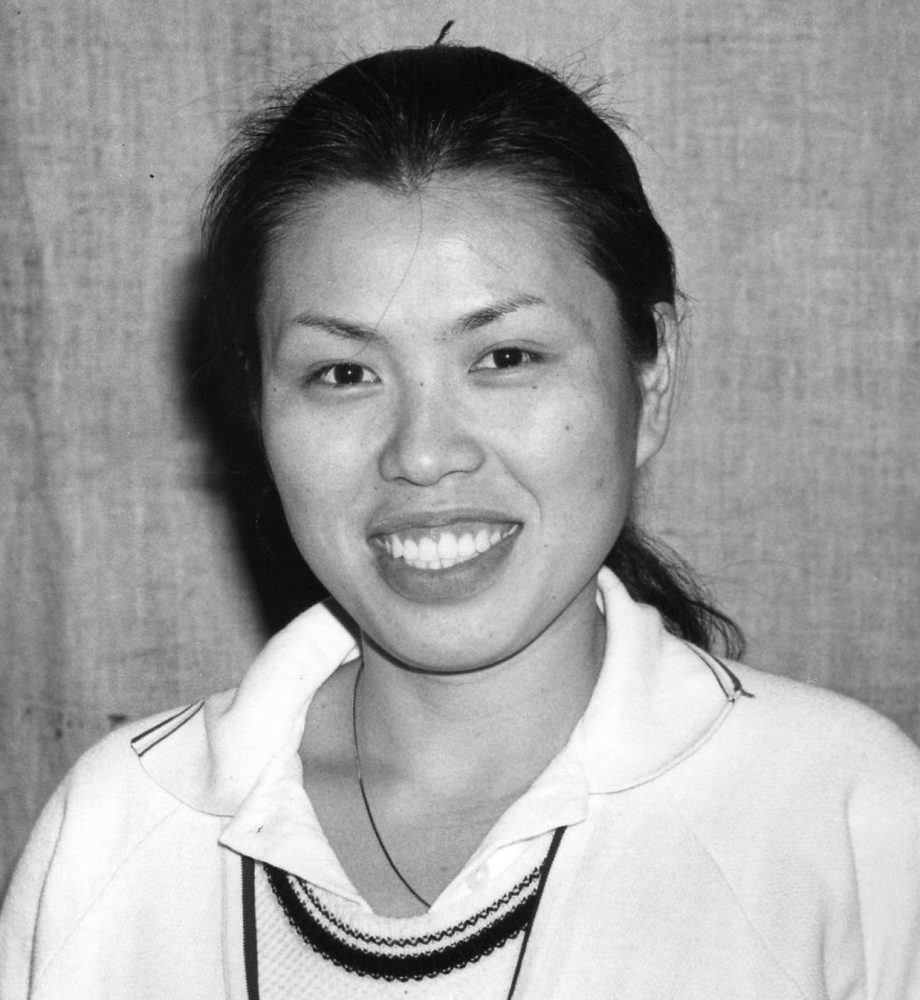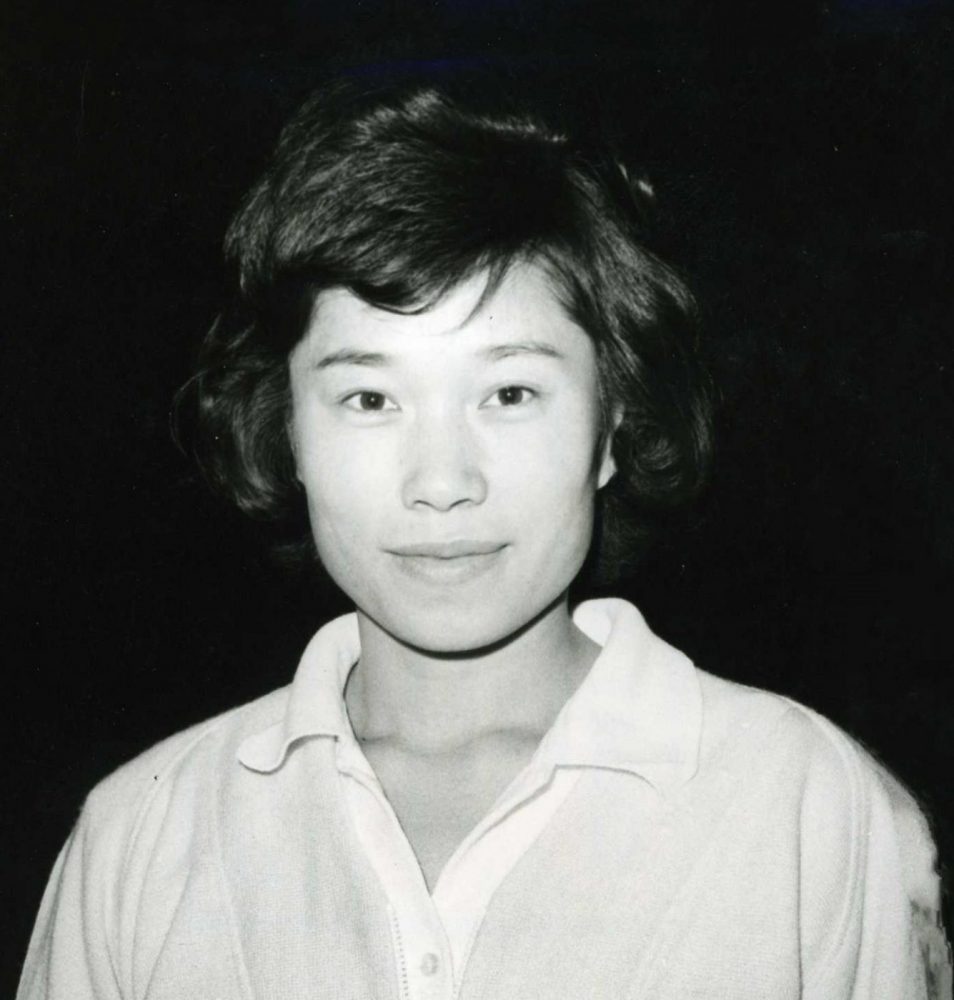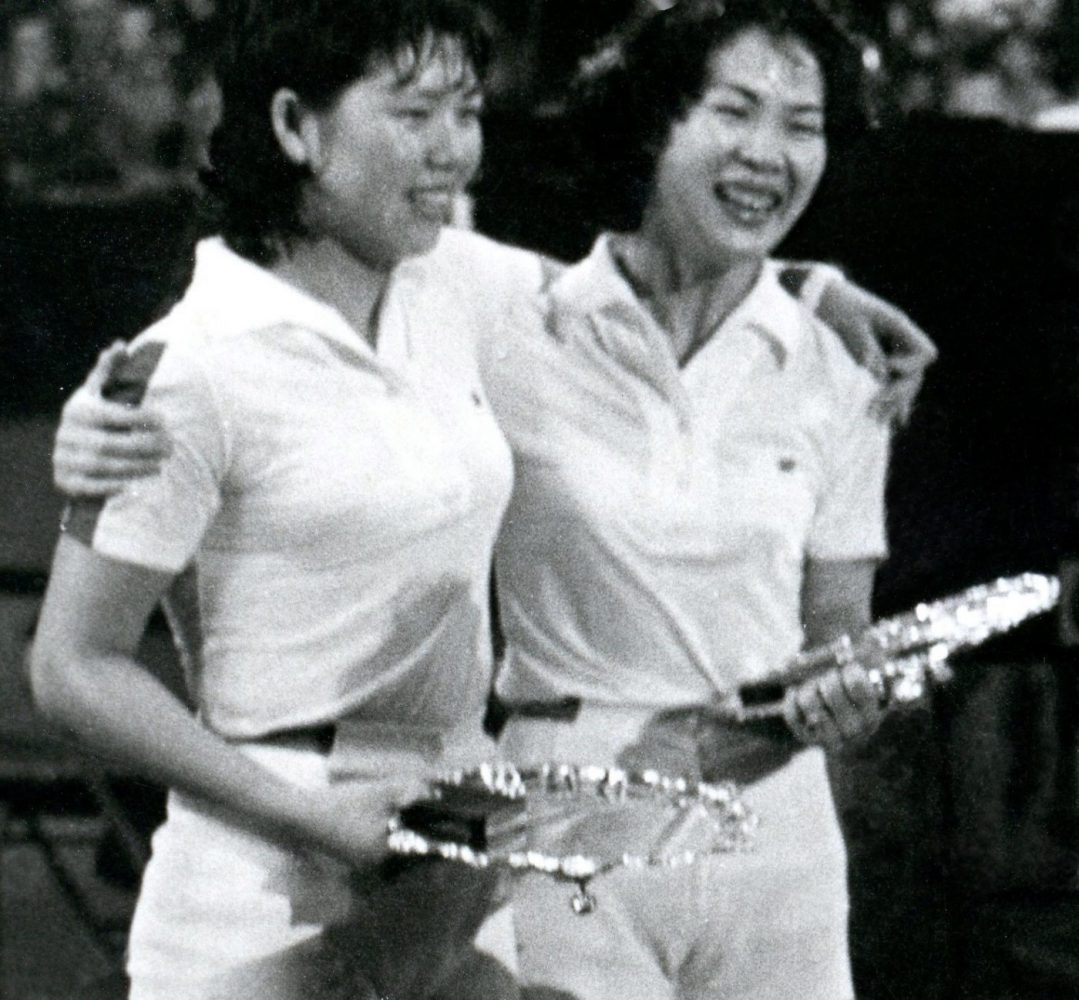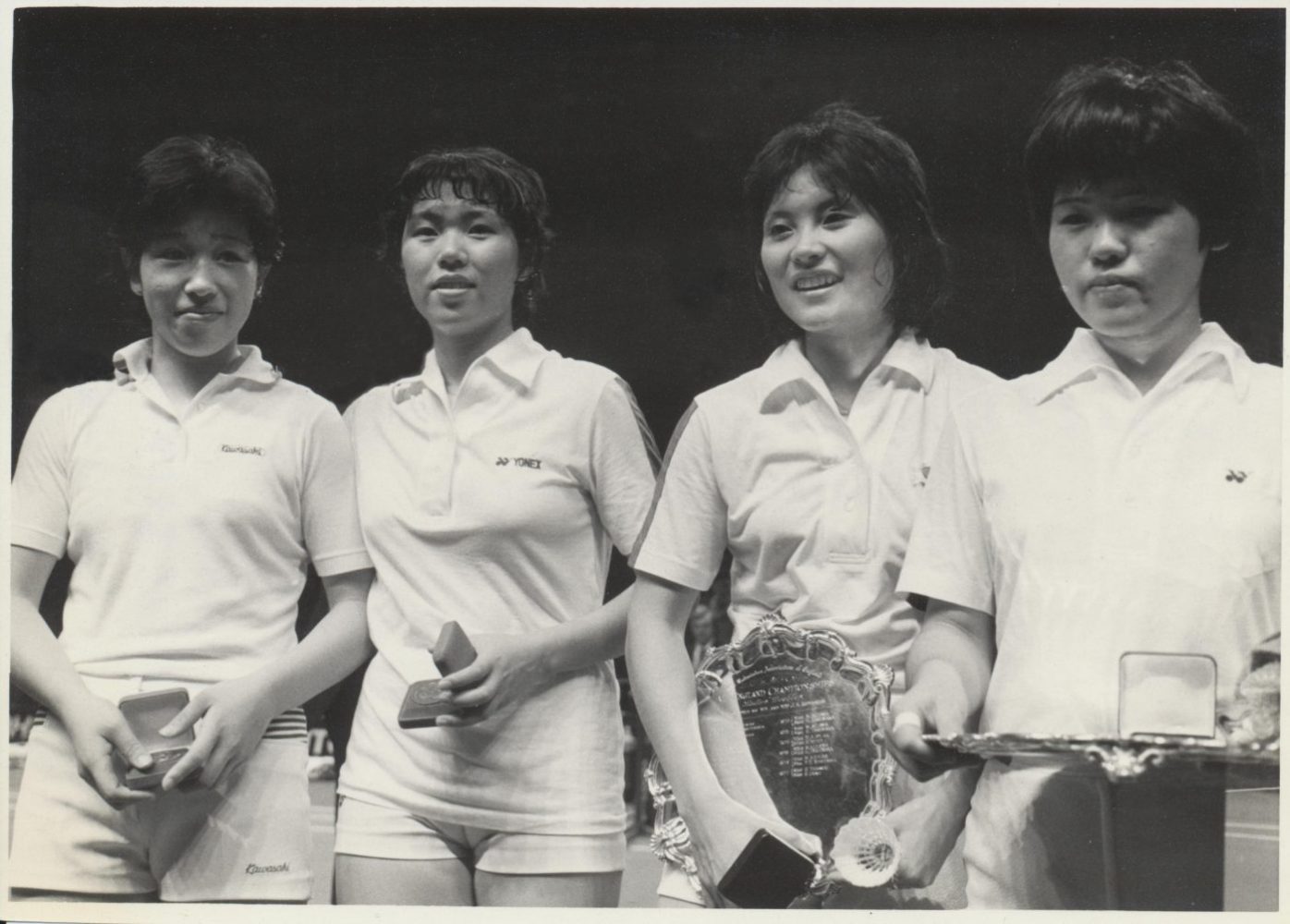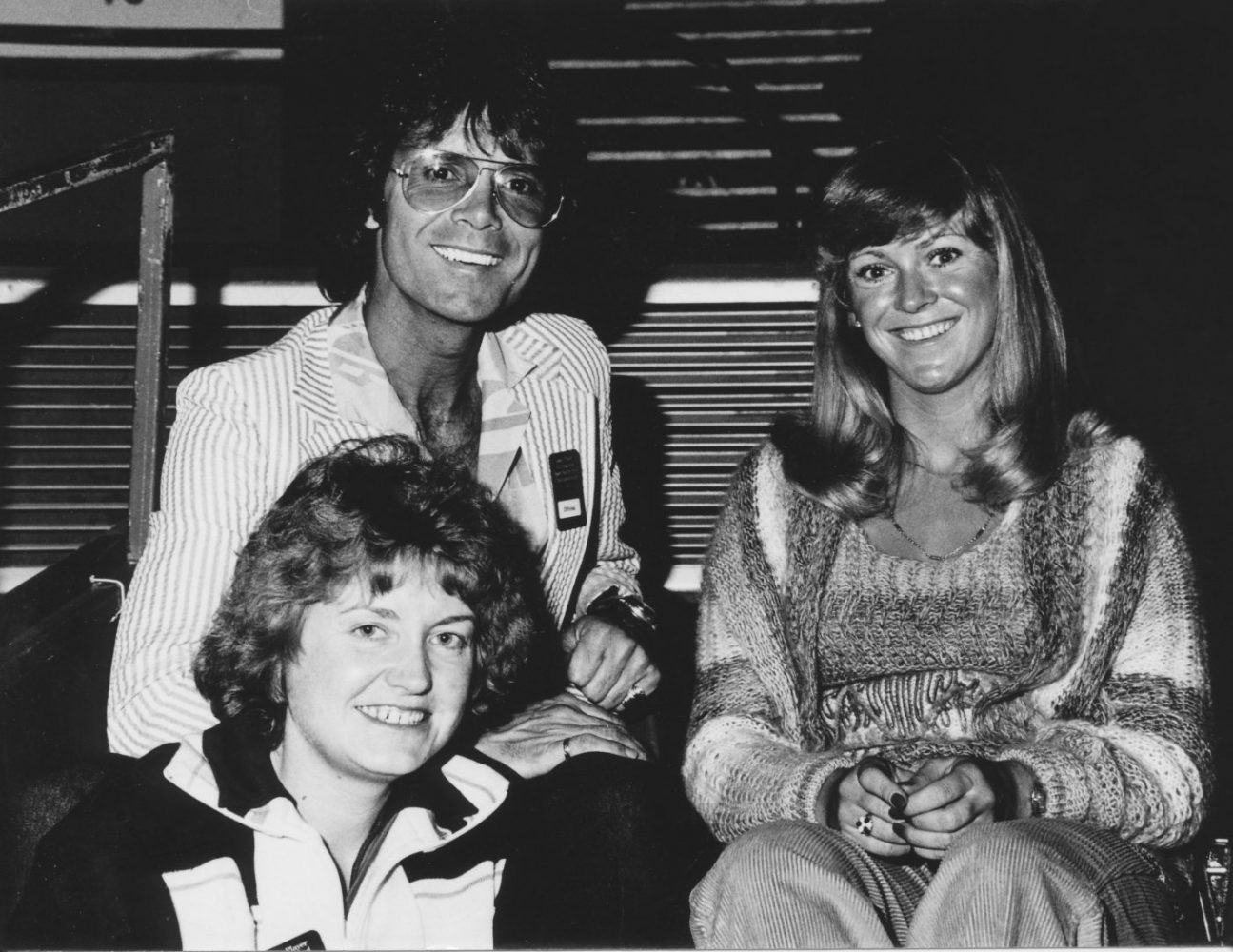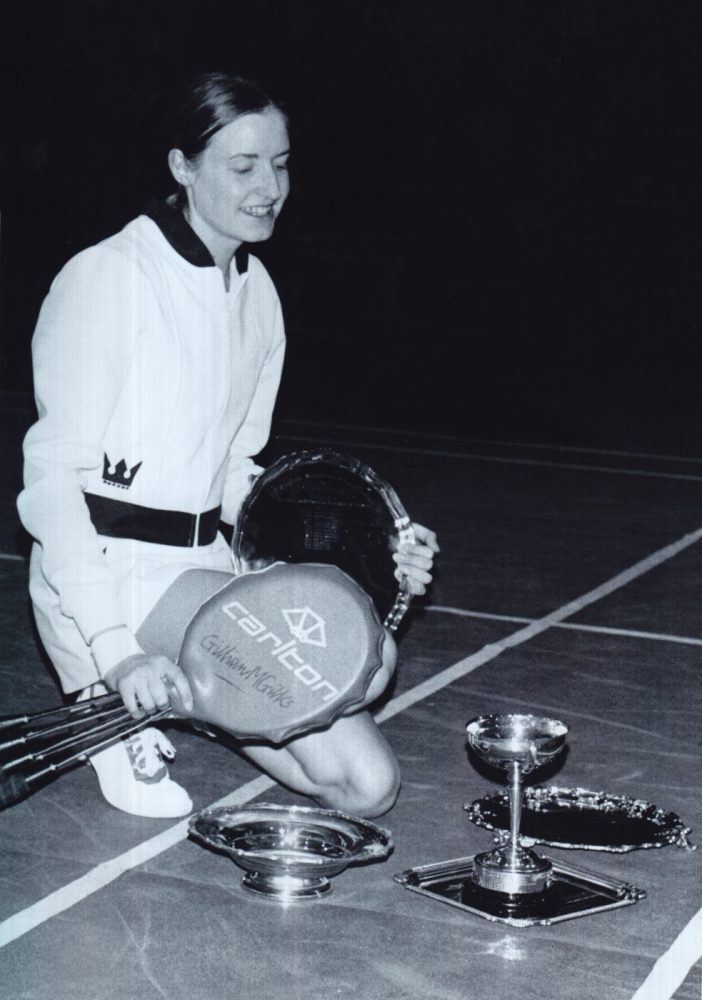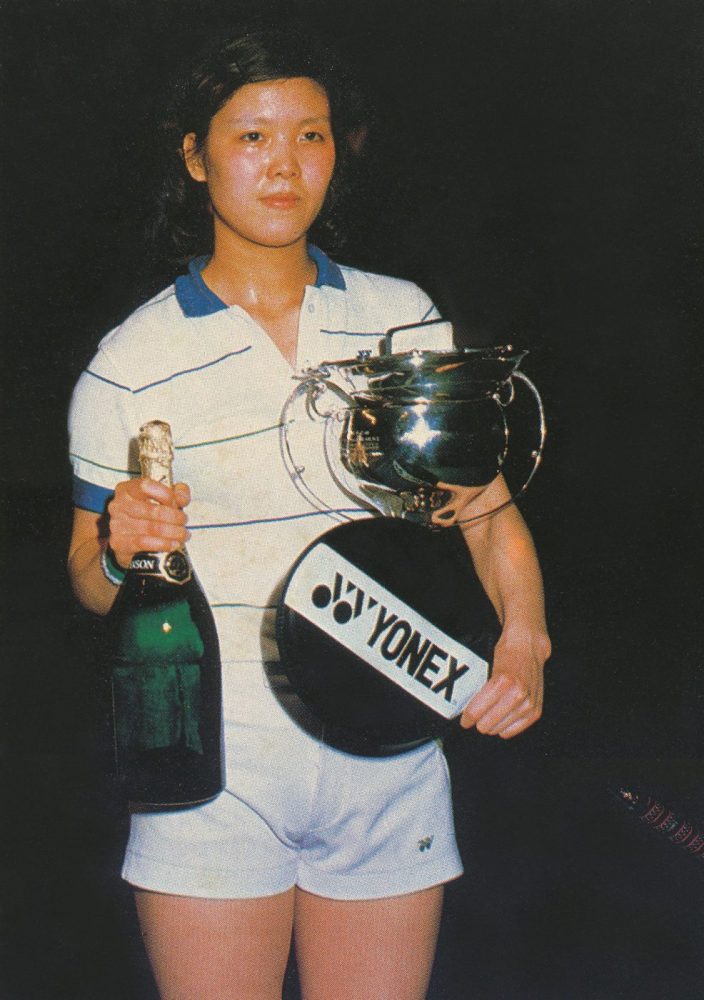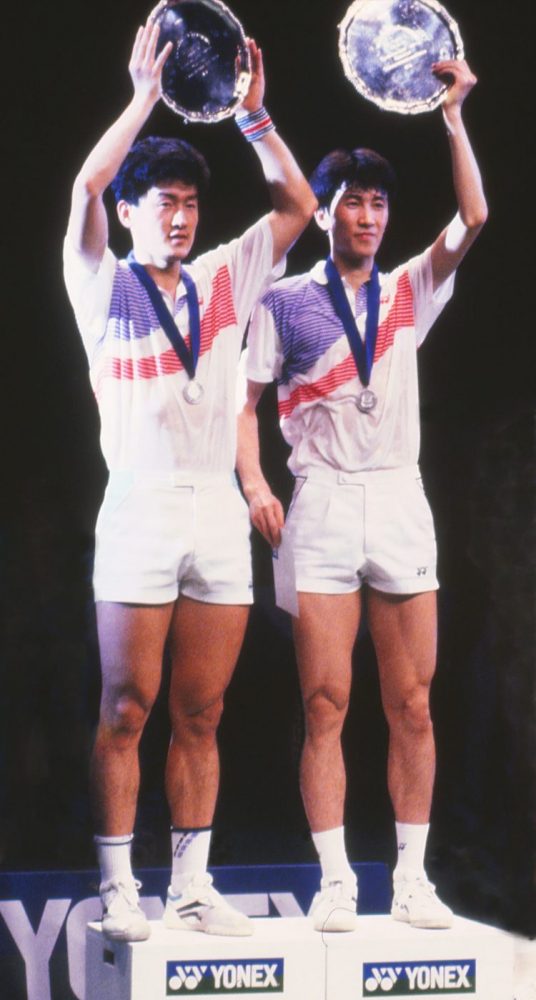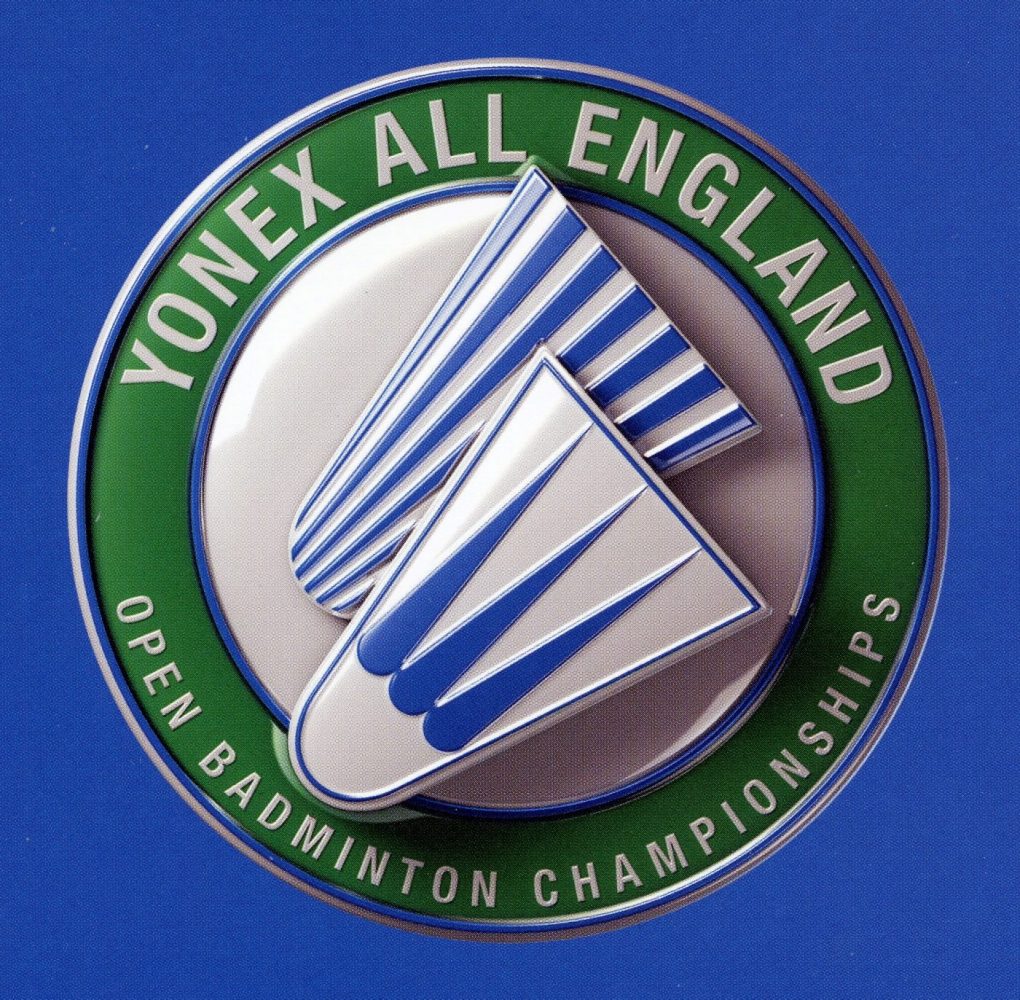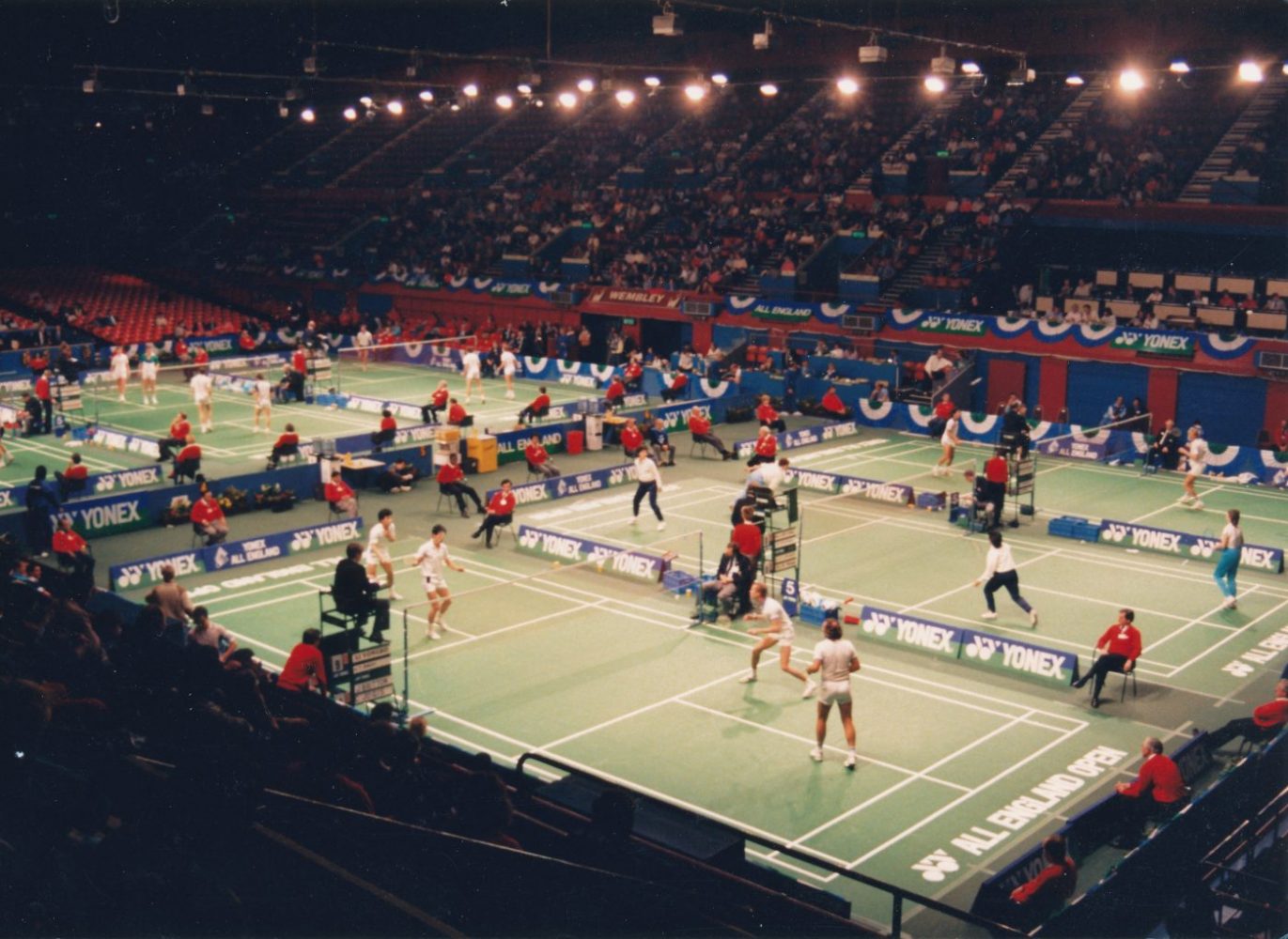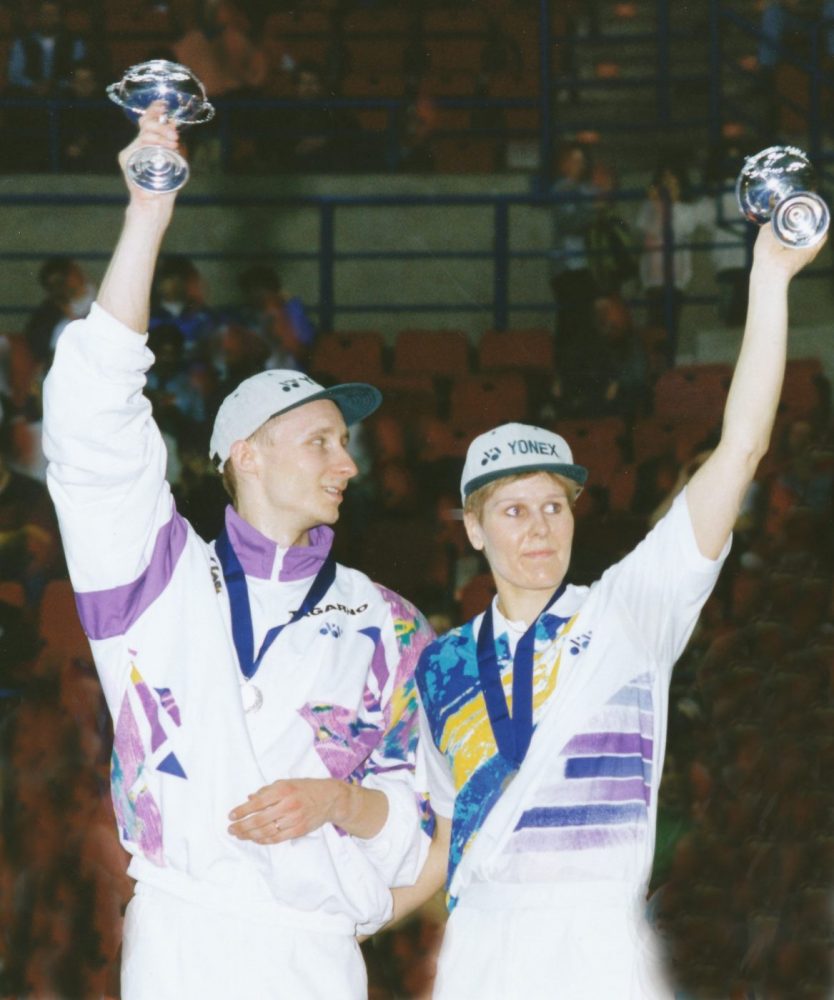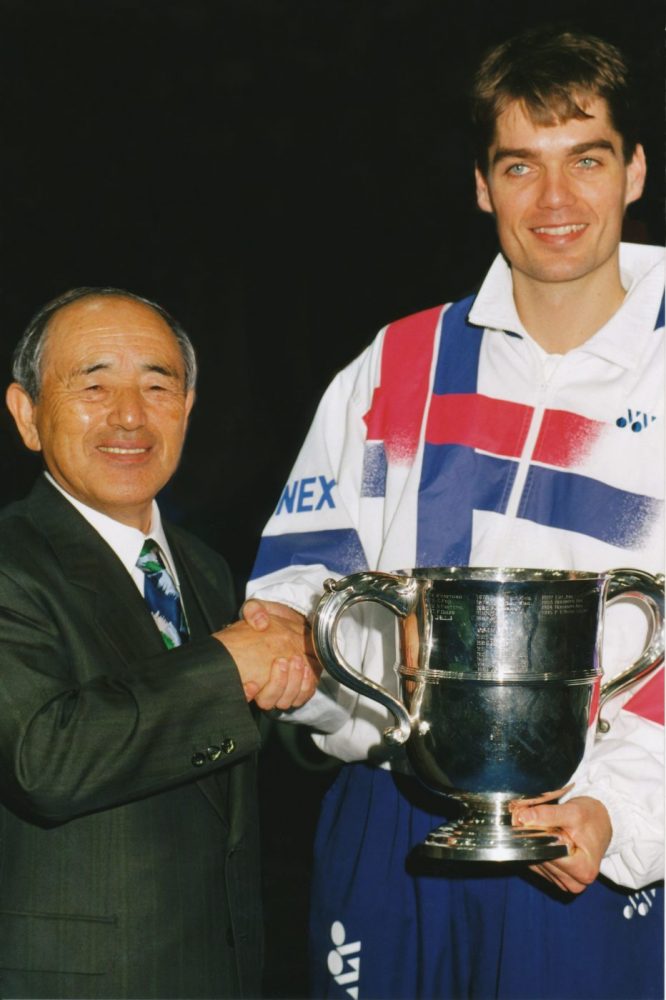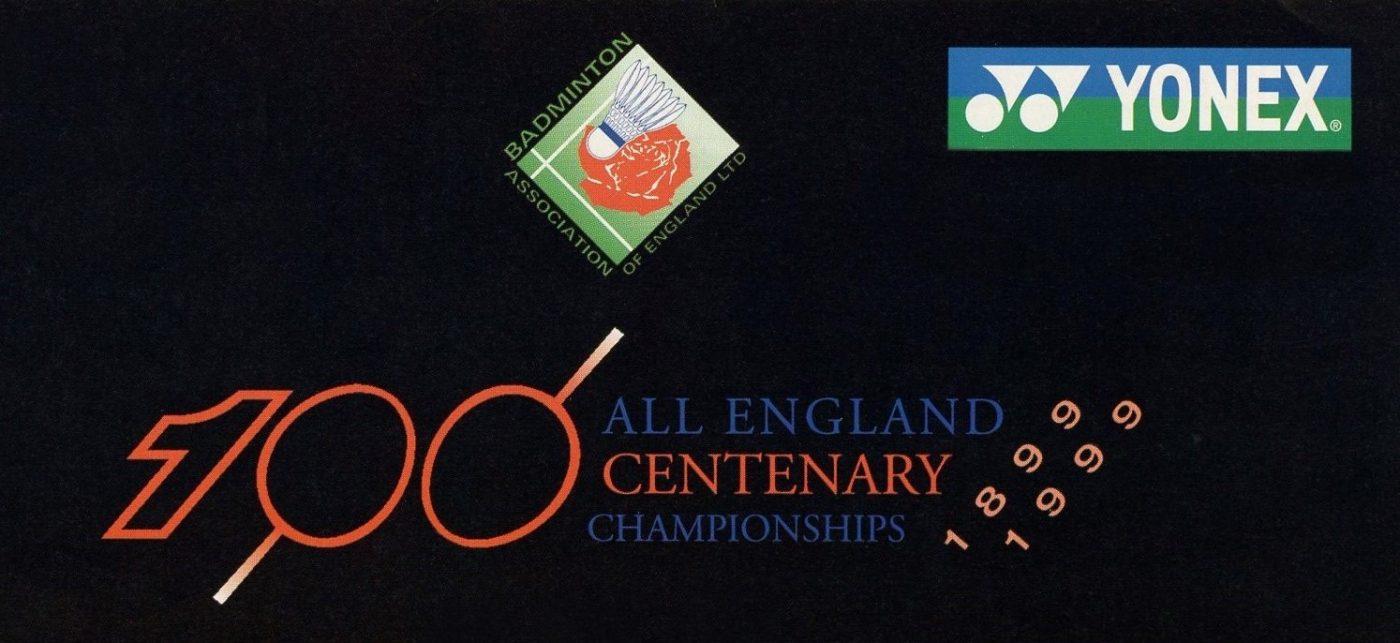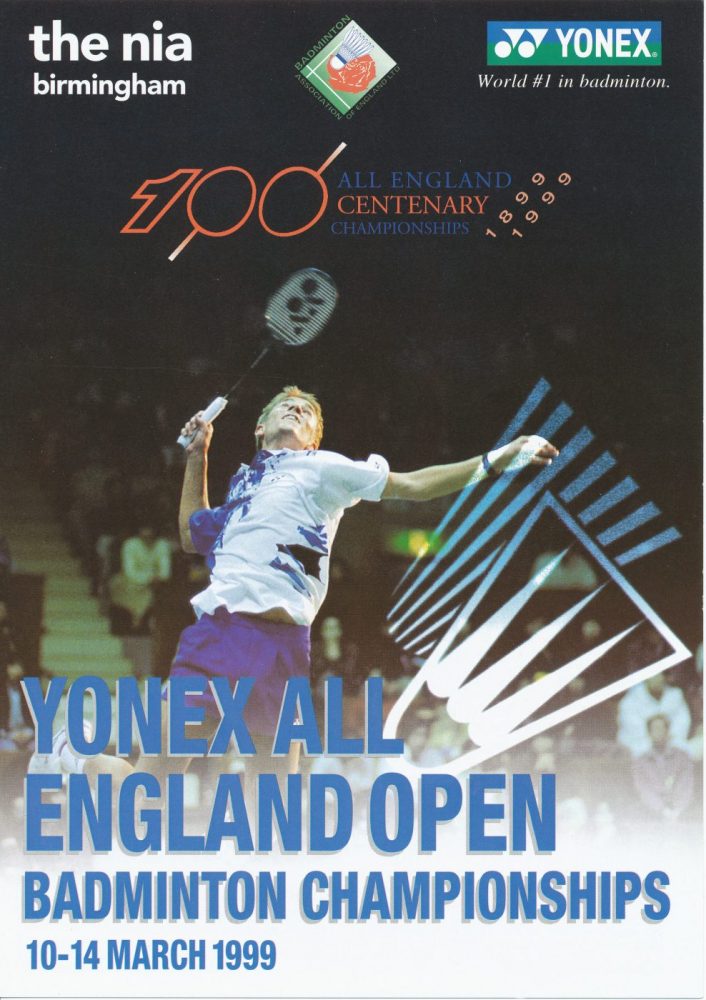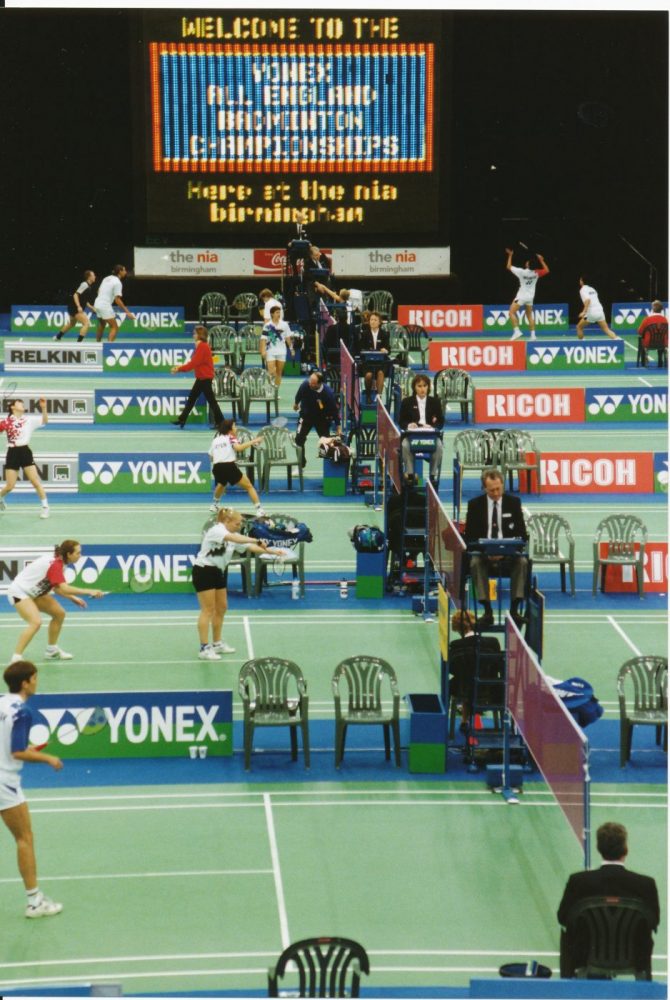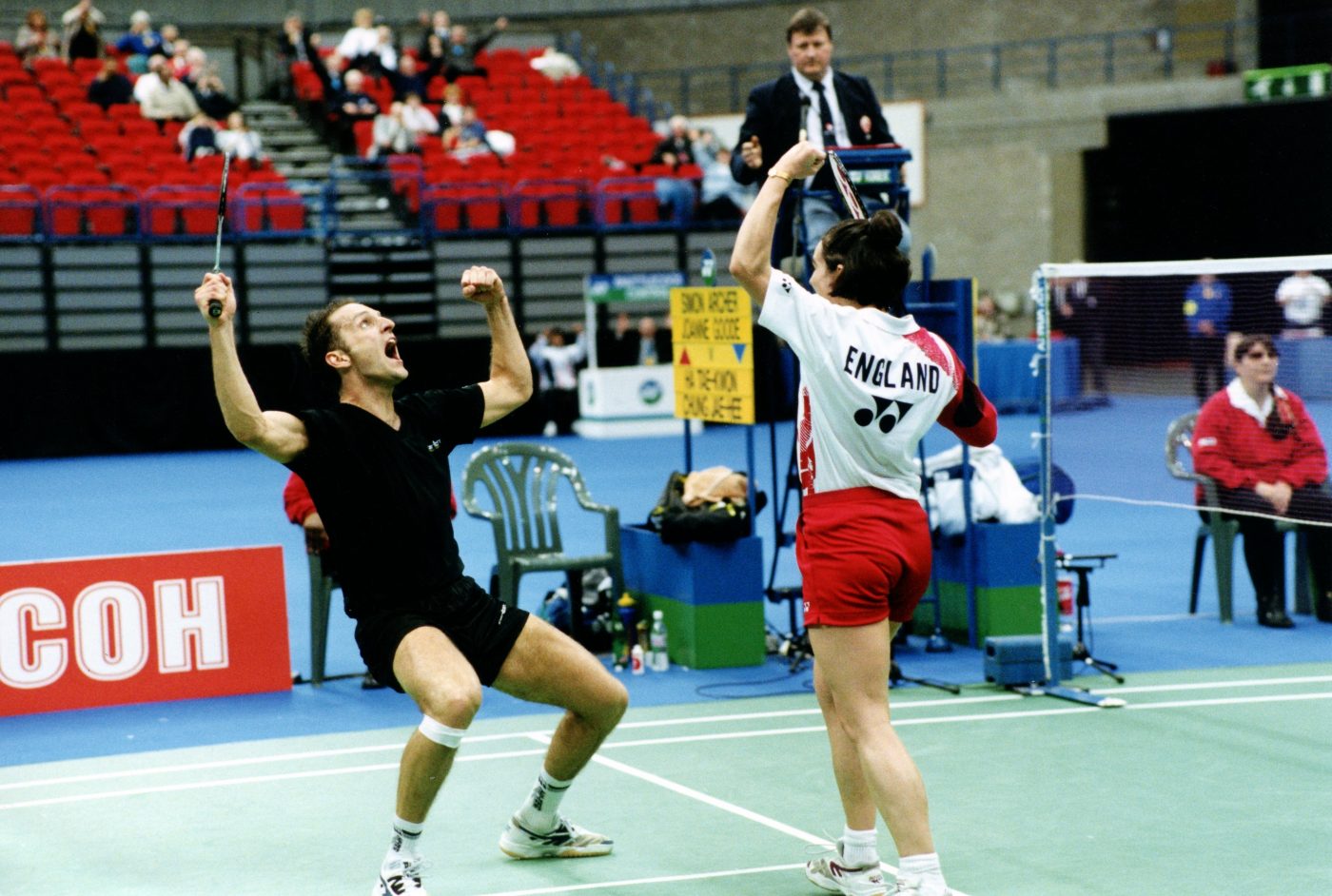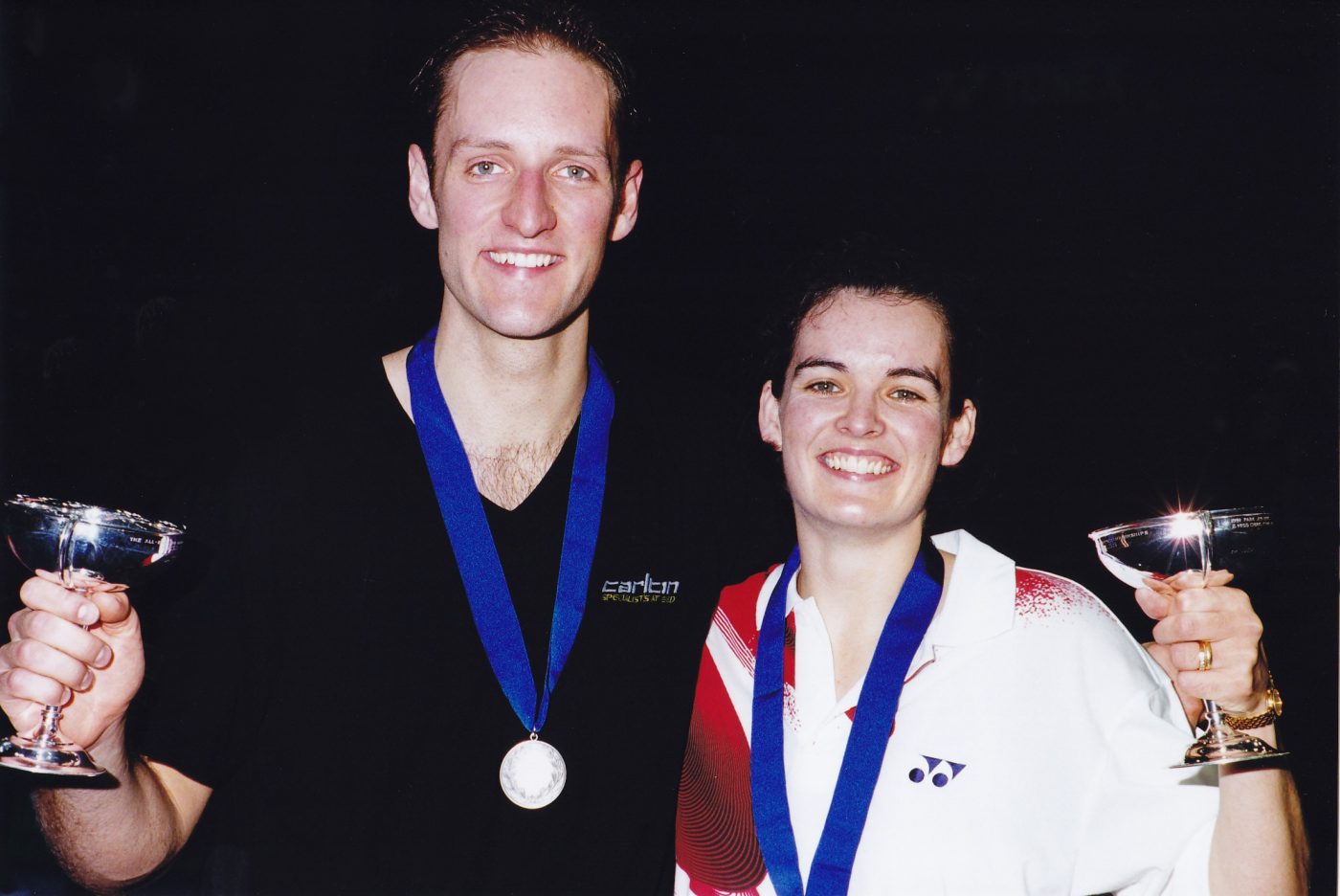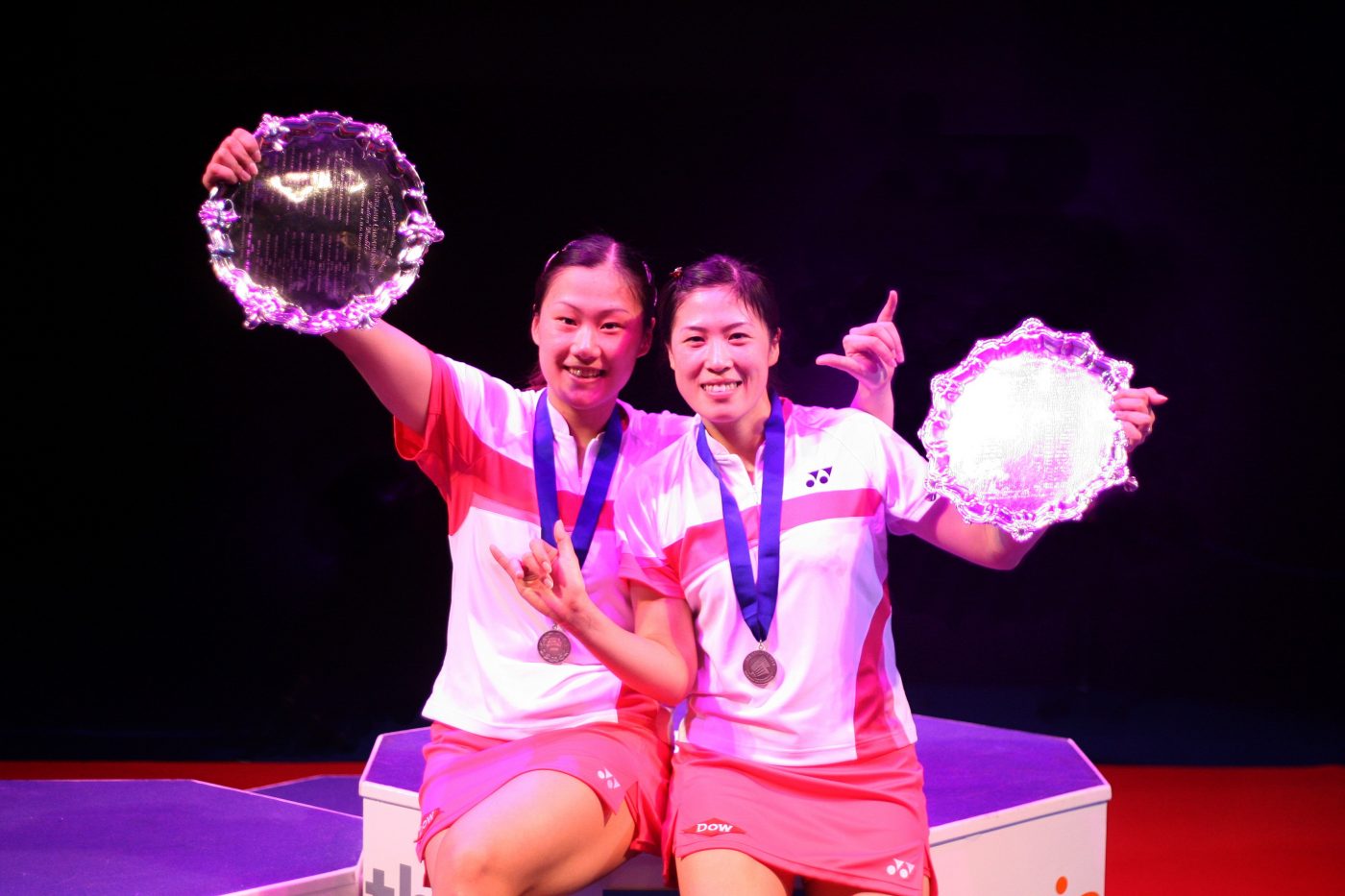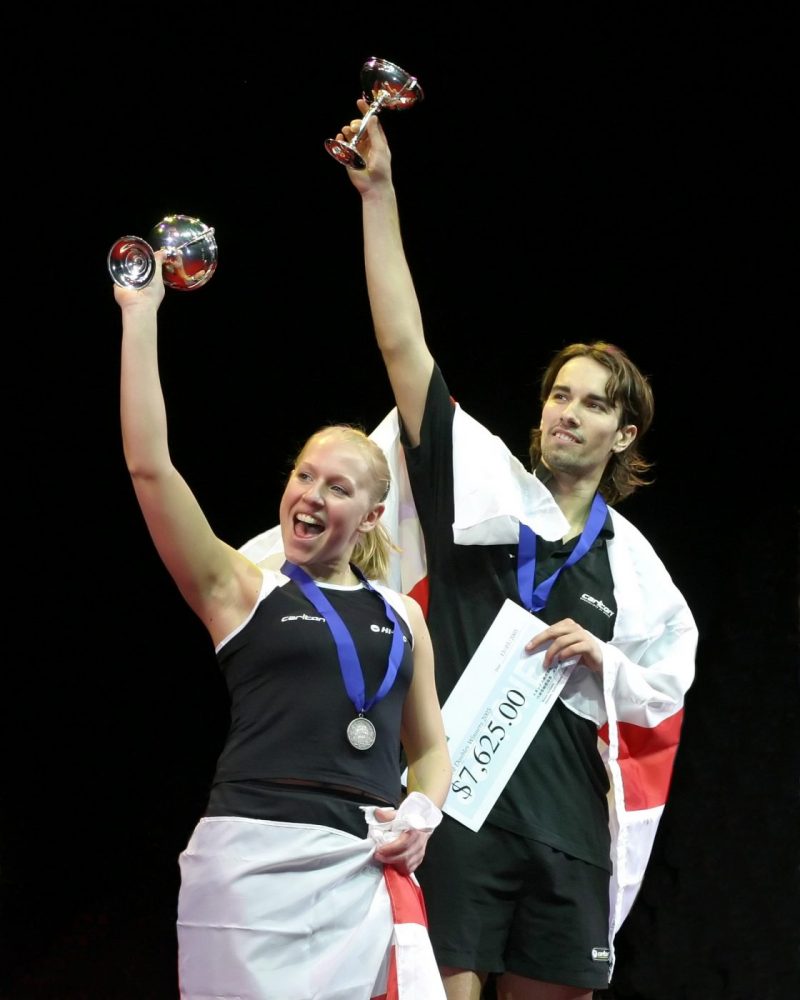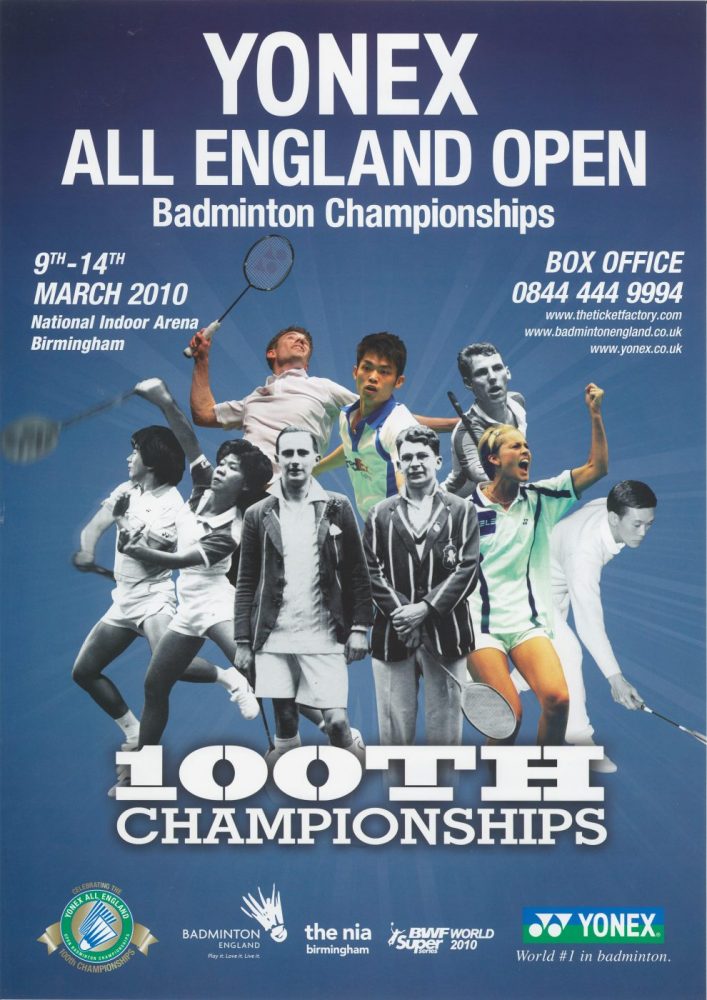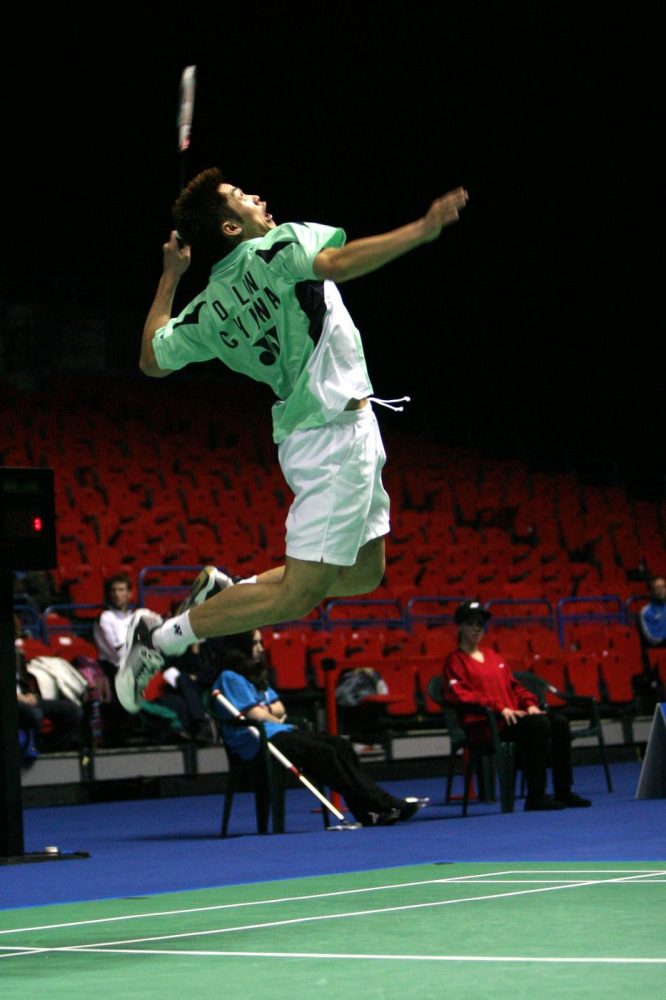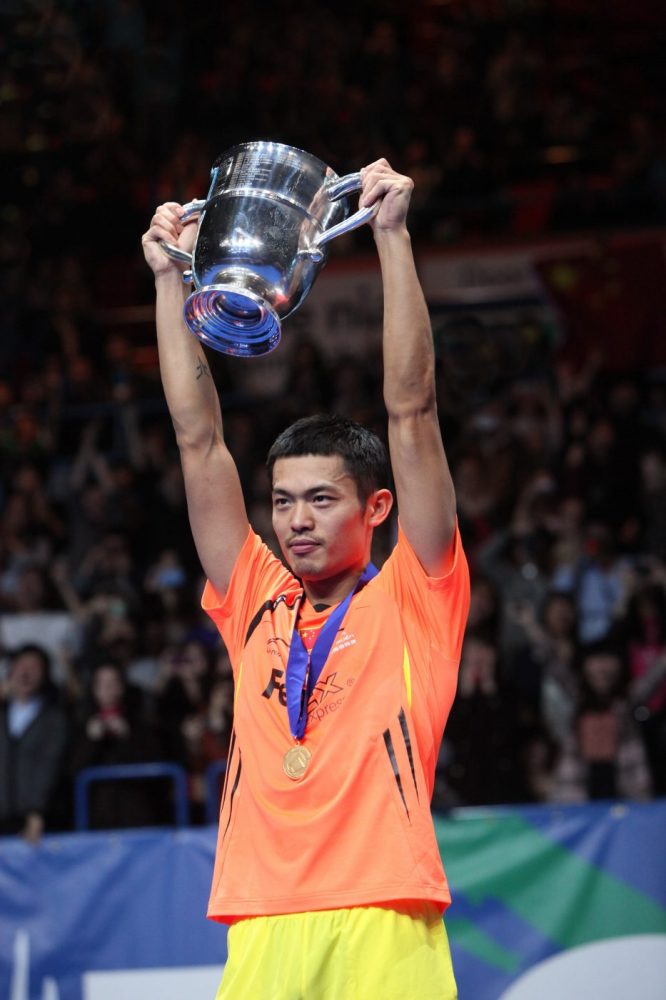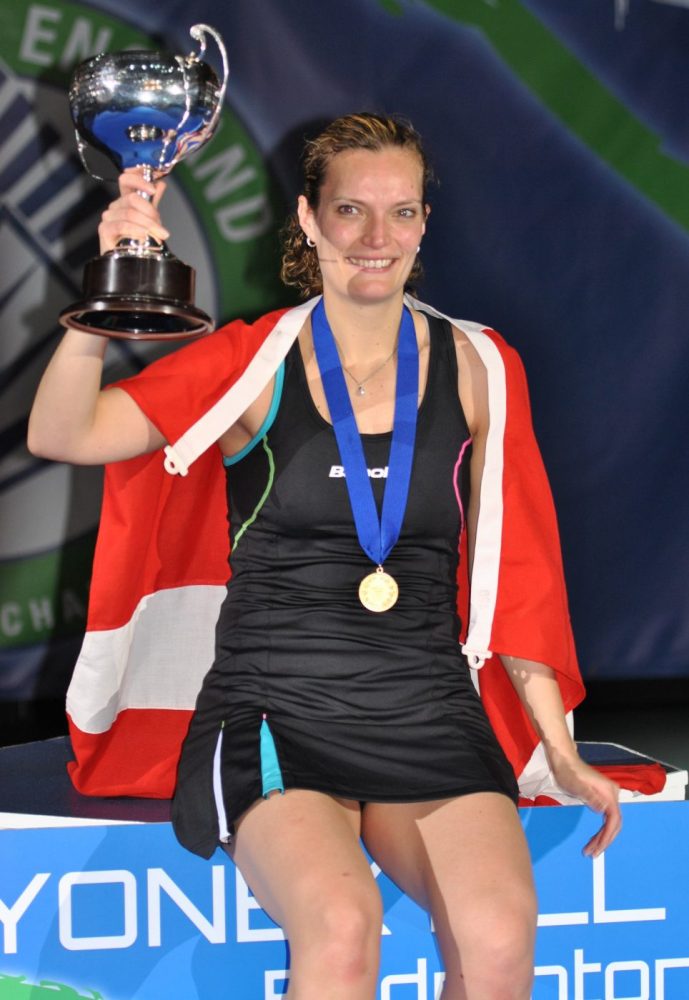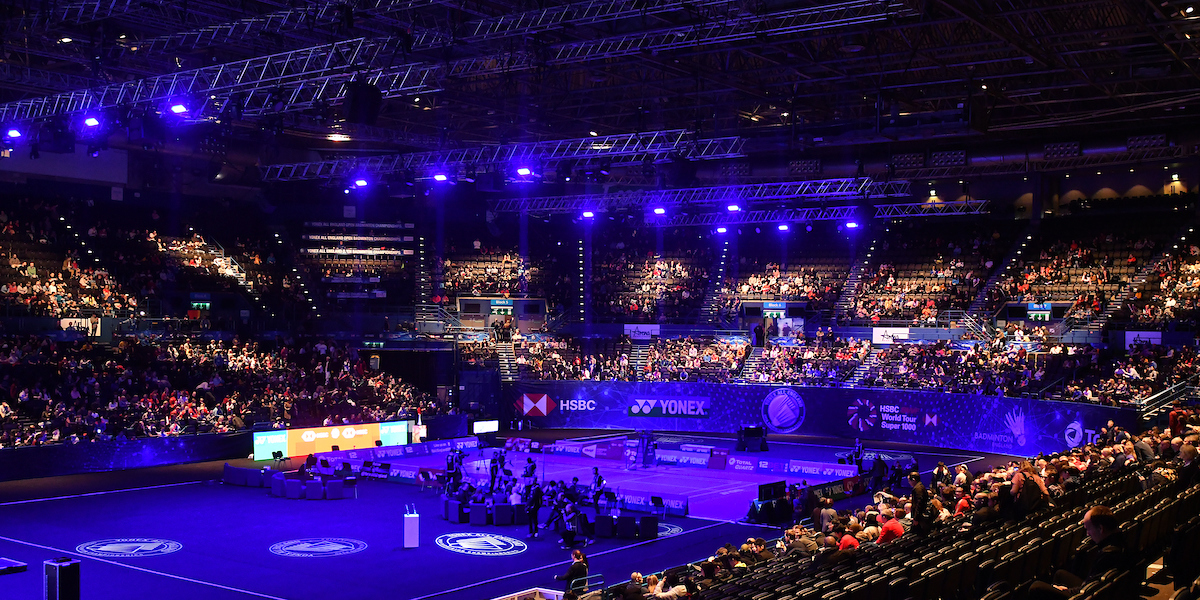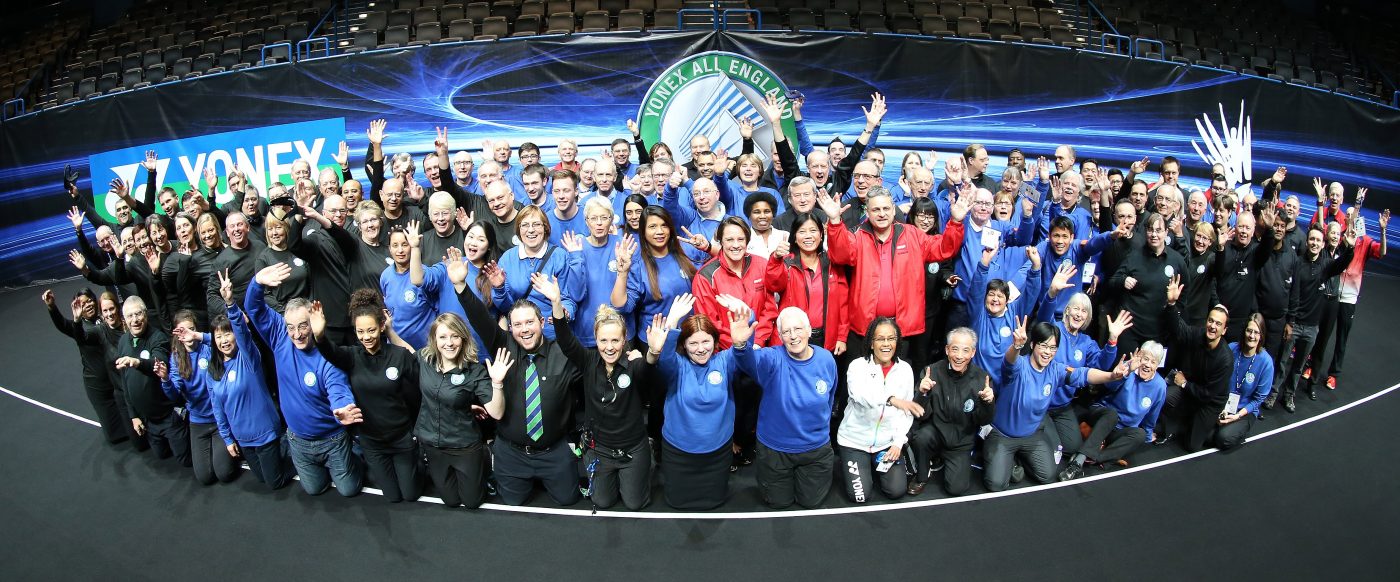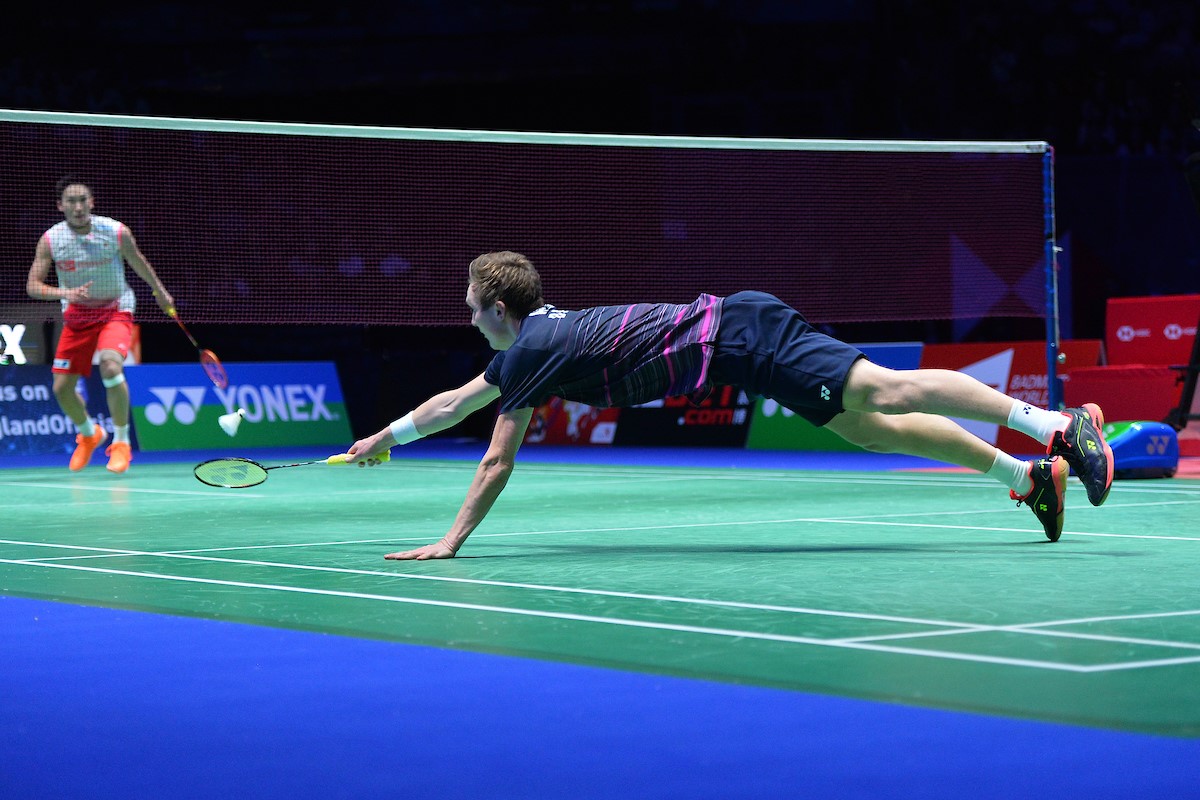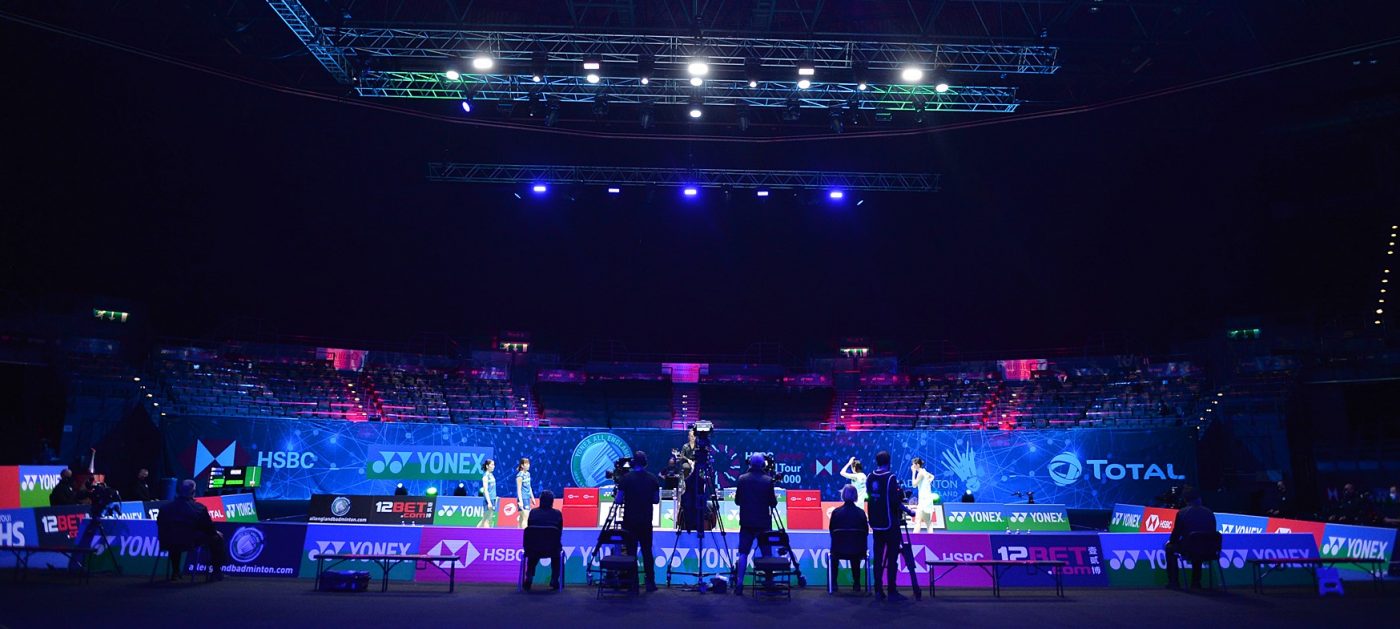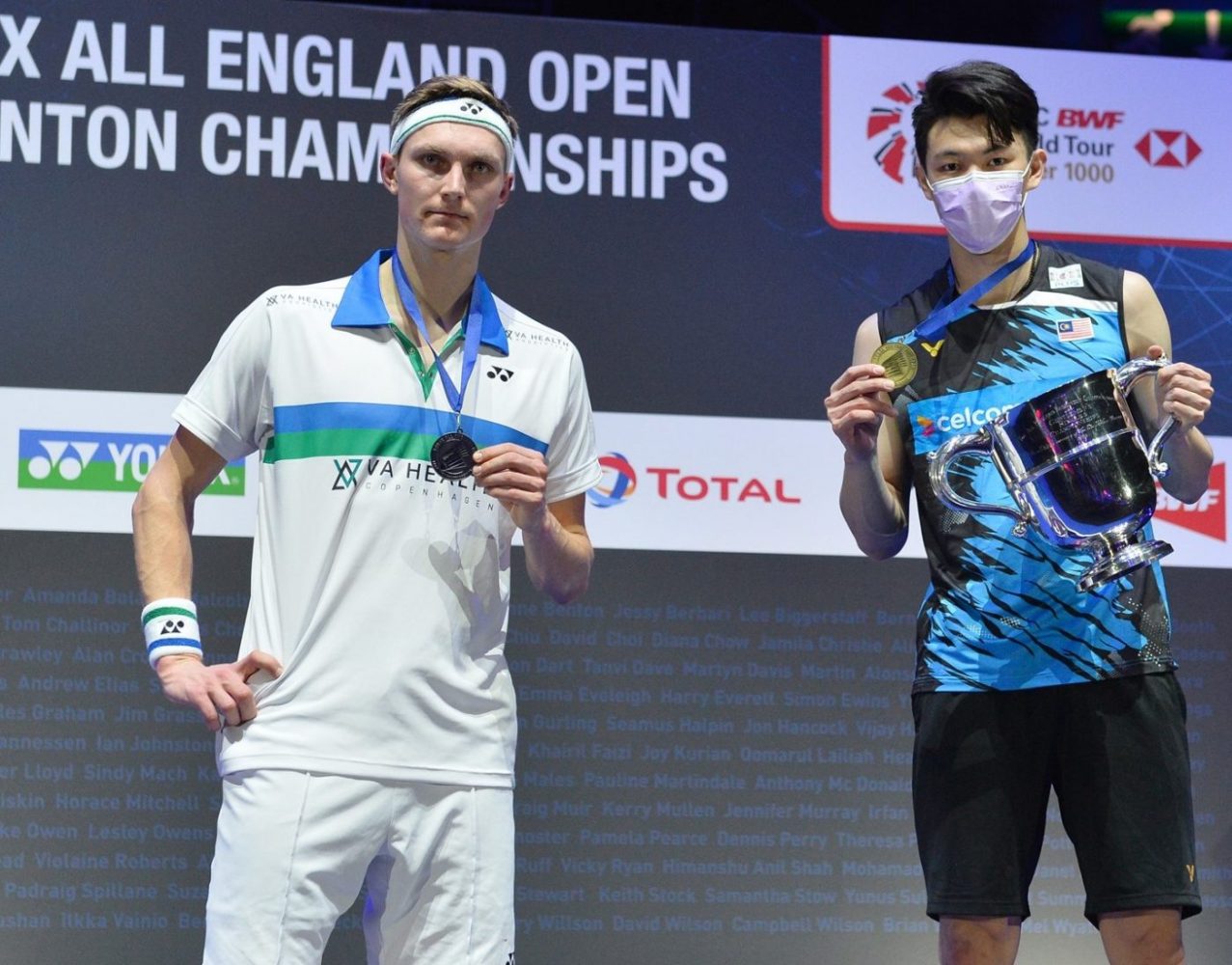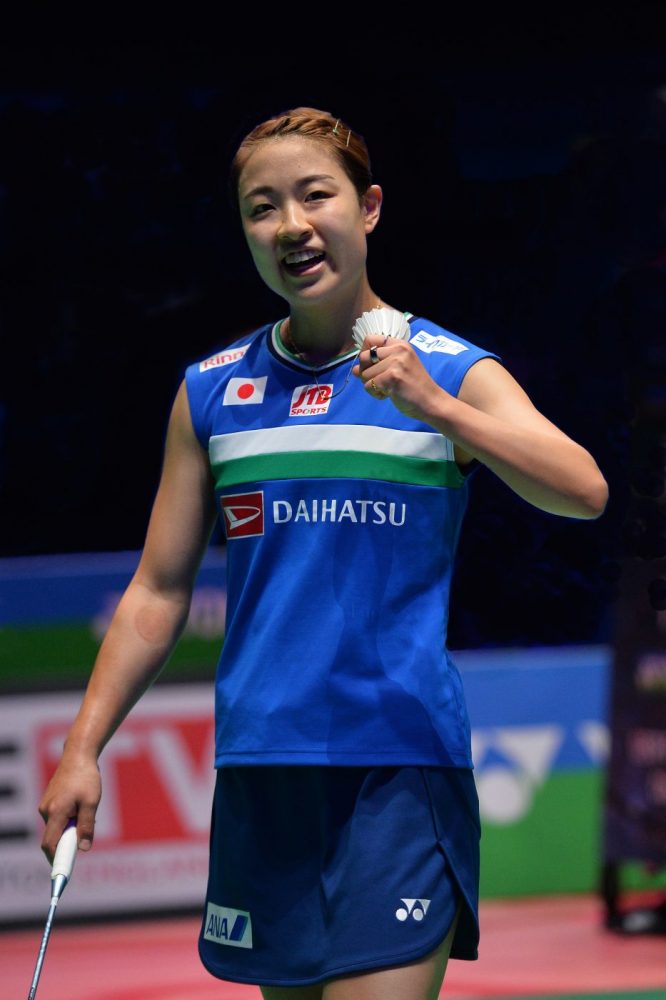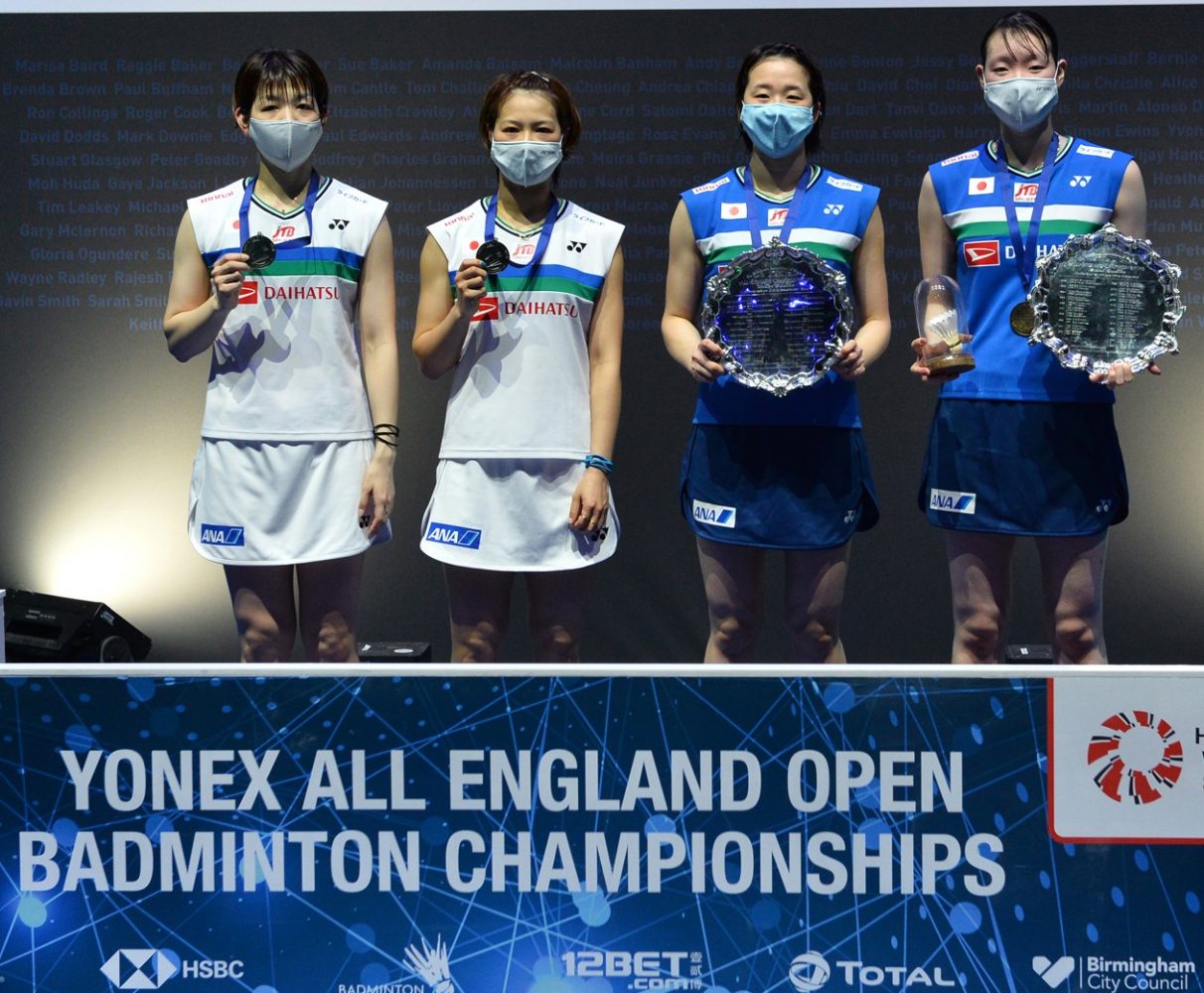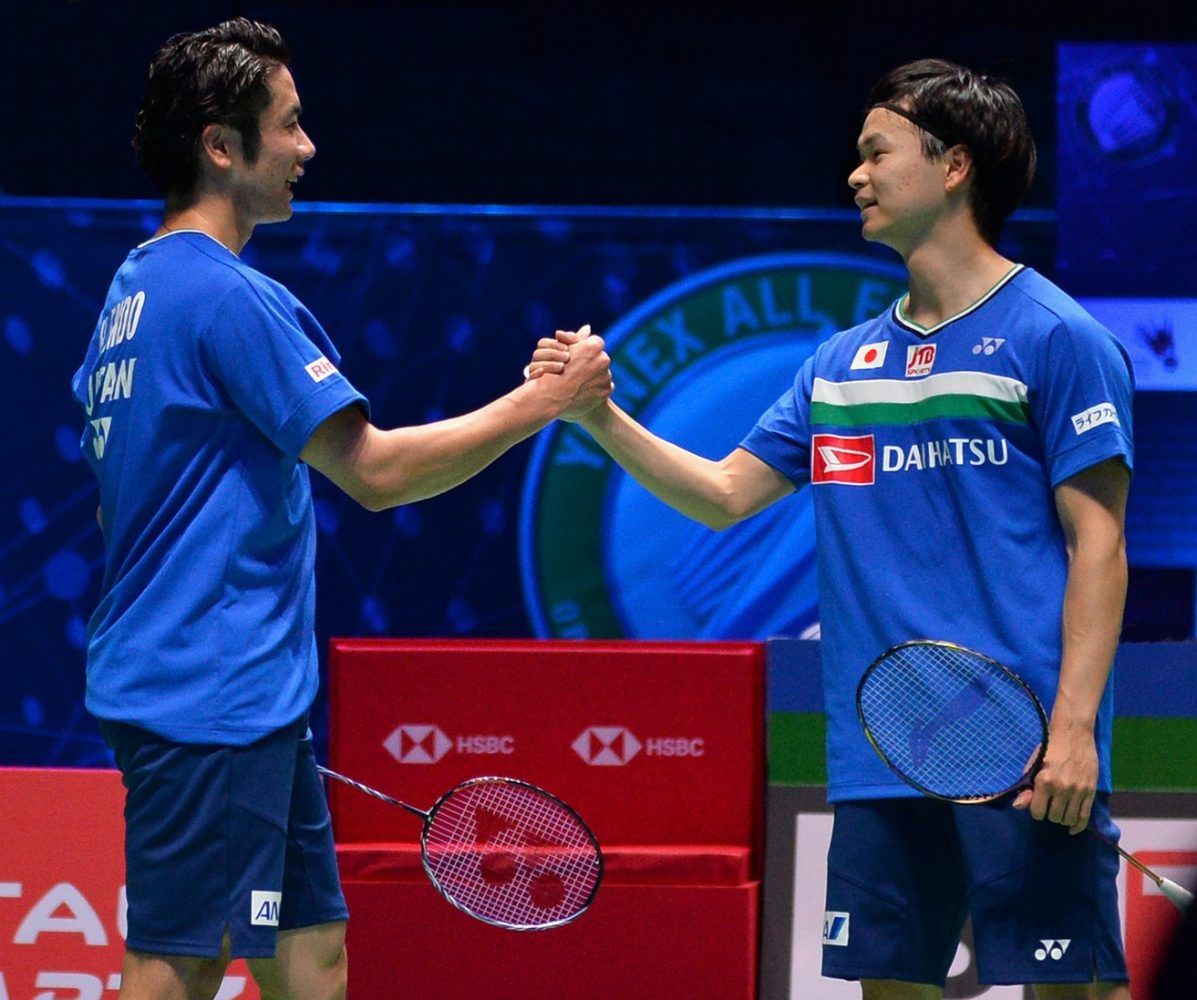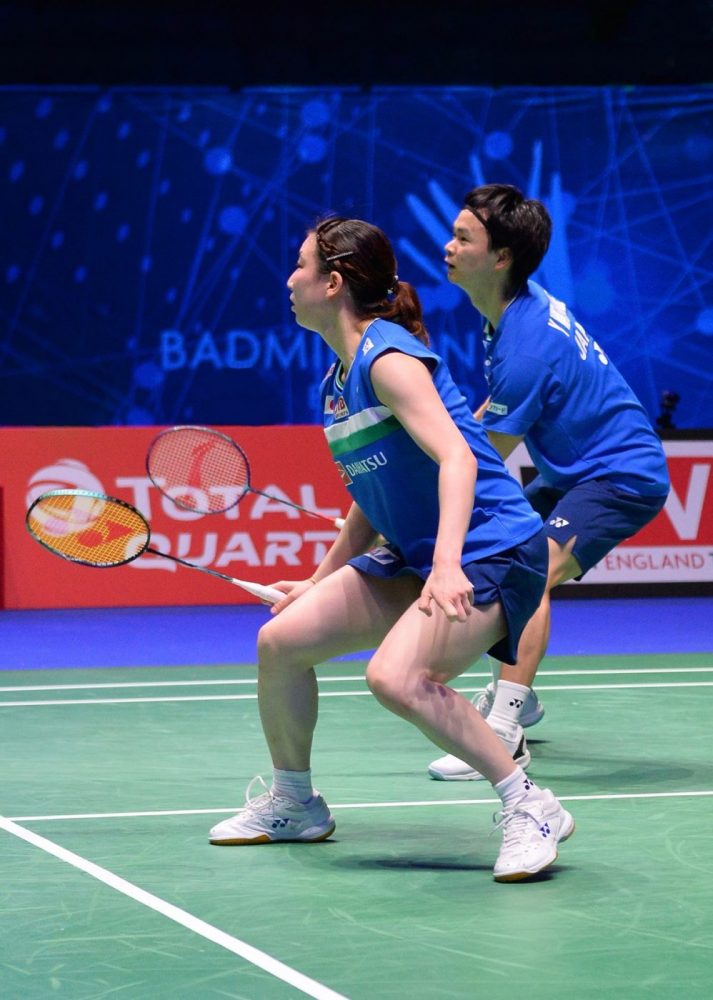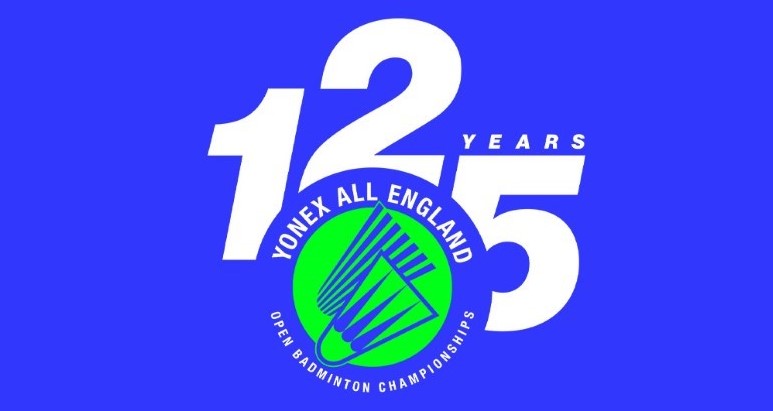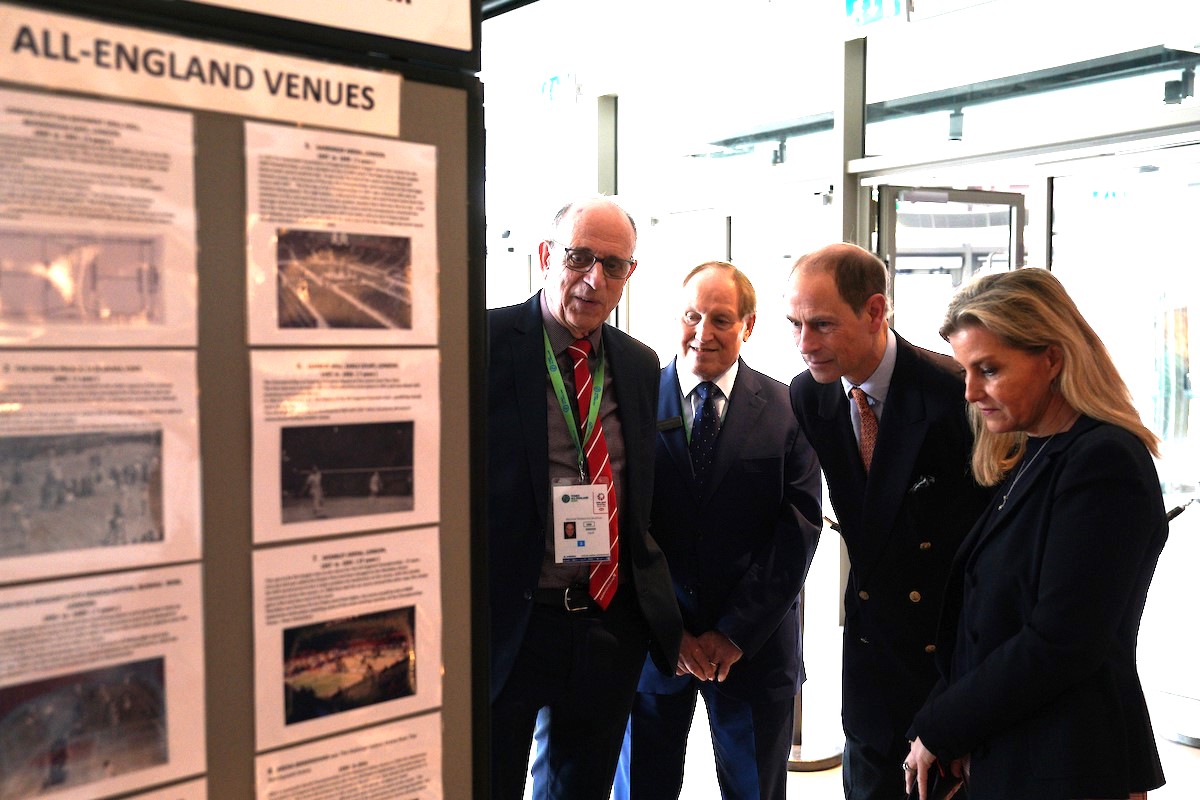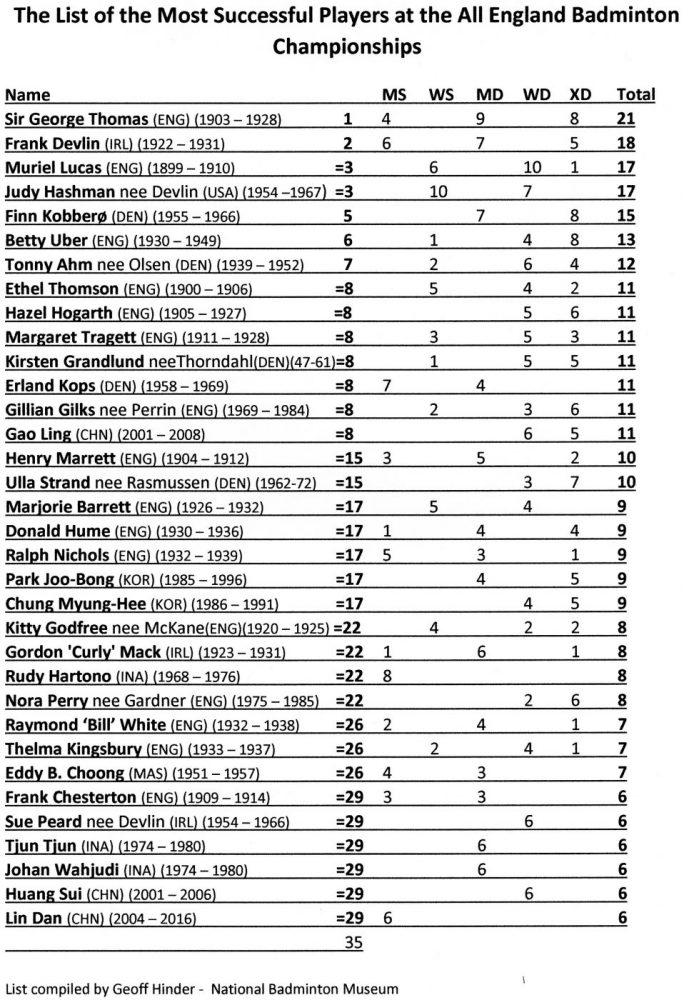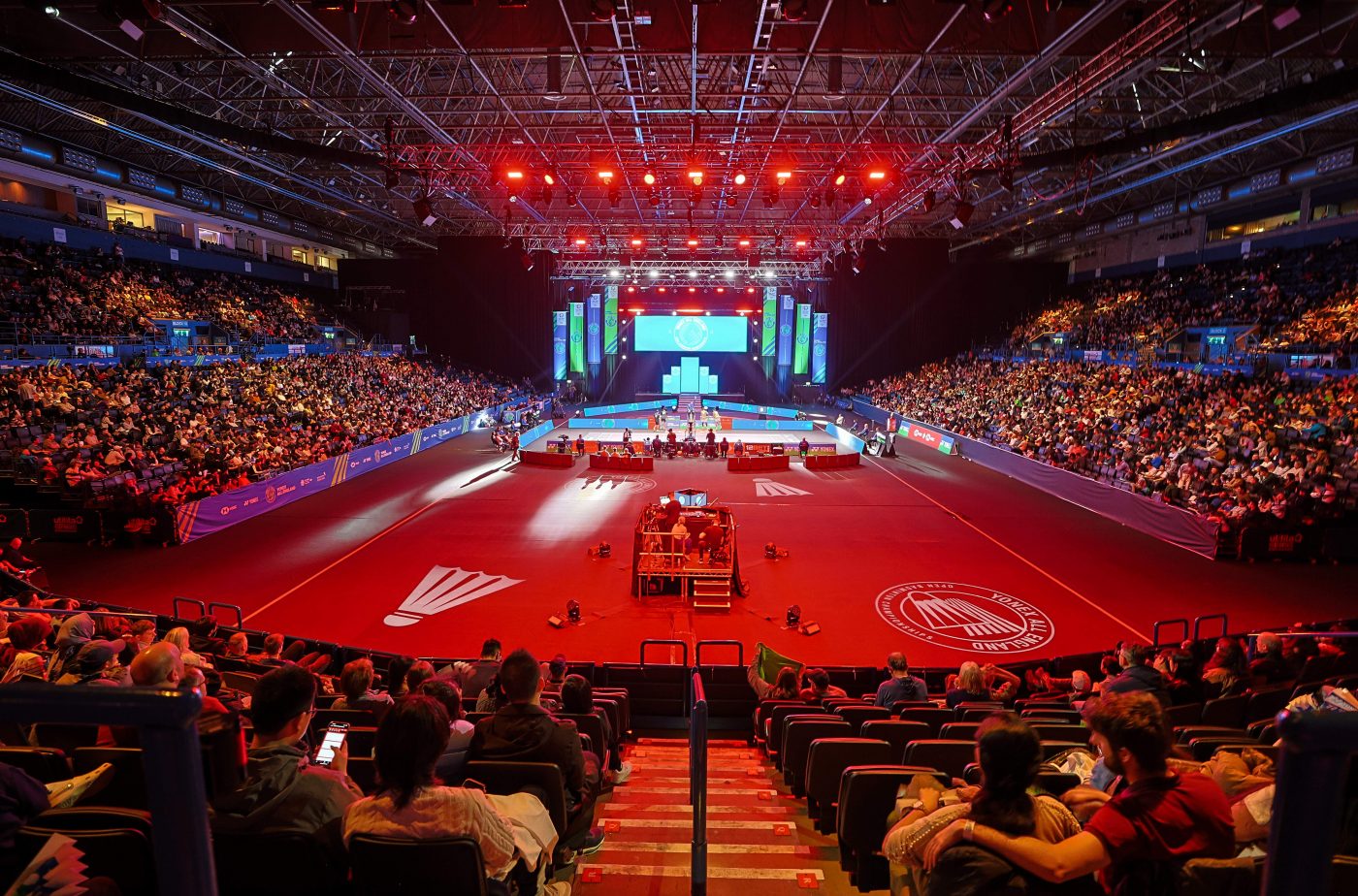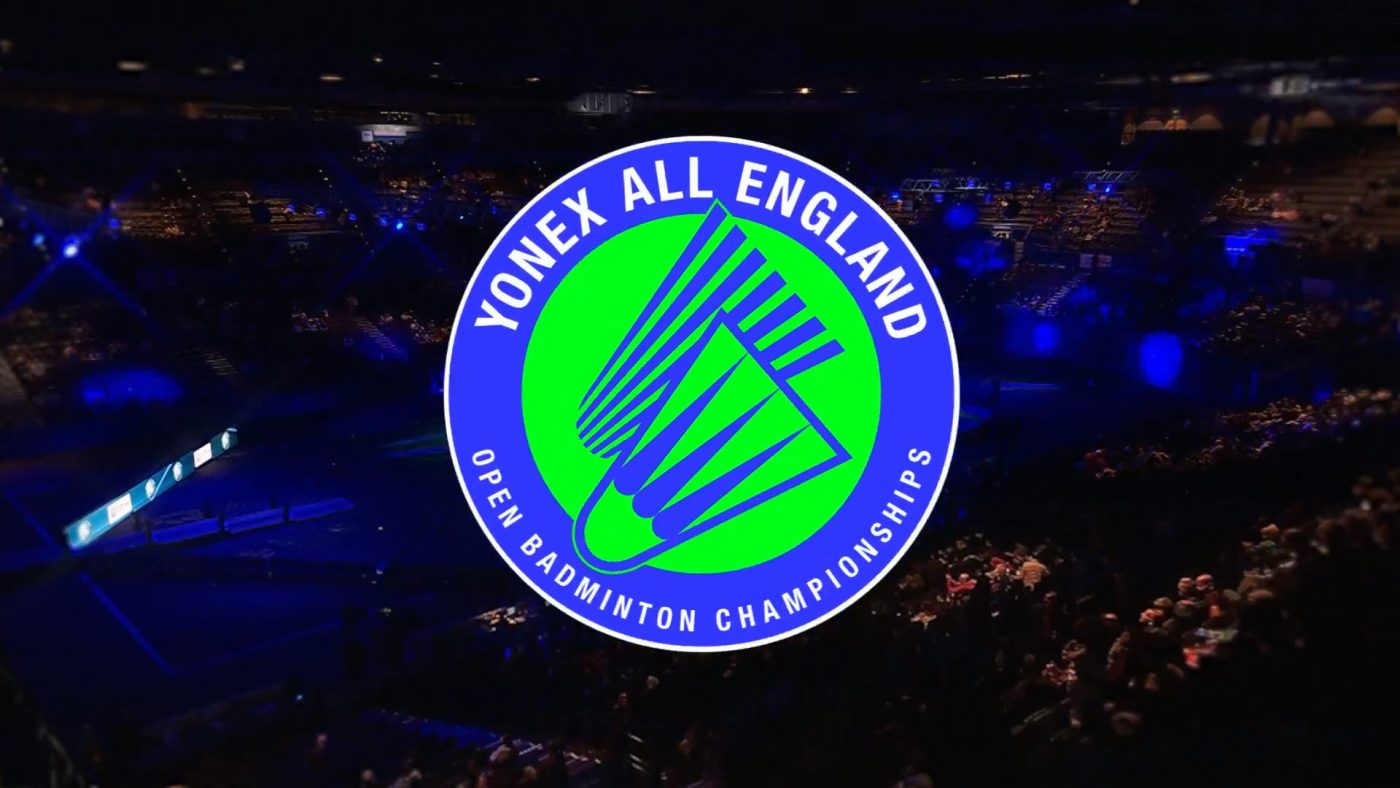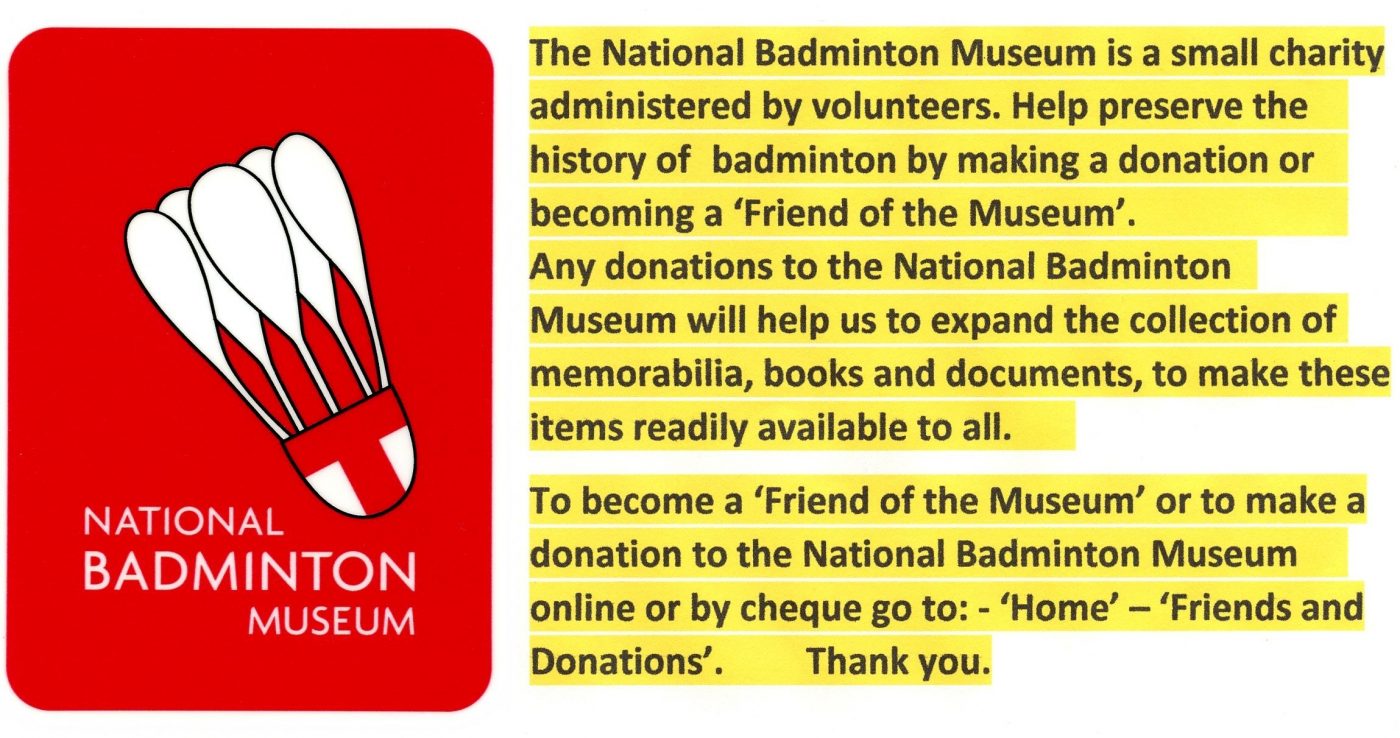The History of the All England Badminton Championships
The first Championships were played at the London Scottish Drill Hall in 1899 with only doubles played, singles being introduced the following year. The Championships would use three venues in London before settling at the Royal Horticultural Hall for 25 years. It was mainly dominated by English and Irish players for the first 35 Championships then gradually more players from overseas participated. In 1947 when the tournament resumed after the Second World War it would be mainly Danish and Malaysian players winning the titles. Eventually the Championships settled at the Wembley Arena for its longest period of 37 years in one venue. The Championships now being sponsored by Yonex, would make its last move to the National Indoor Arena, now called Utilita Arena, Birmingham.
For more information on : –
All-England – Champions – Click Here.
Muriel Lucas was one of the first great All-England champions.
In 1898 the Guildford Badminton Club organised the first ever open badminton tournament at Guildford, England, it was a one-day event with men’s, ladies and mixed doubles being played. The first tournament at Guildford was such a success that the Badminton Association (England) decided to hold their own event and the following year, after much consideration it was decided to hold the first Championships on 4 April 1899 at the London Scottish Drill Hall, Buckingham Gate, Westminster, London. Again, the tournament was played on a single day with only doubles being played. The Drill Hall was conveniently close to the main railway stations, and was well lit, lofty with four courts, although the two end courts had balconies hanging over them. The tournament was played on hourglass courts which are the normal size as we know them today but the width of the net was only 4.88m wide. The barrelled shuttle was used and the lines on the courts were chalked out on the morning of the tournament before play commenced and needed remarking during the day.
In the second year of the All-England Championships they introduce men’s and women’s singles and it was increased to a two-day event. Ethel Thomson was the first All-England women’s singles champion, who like many top badminton players of the time was a good standard tennis player eventually becoming a Wimbledon tennis champion. The first men’s singles champion was Sidney Smith again a good standard tennis player and a Wimbledon tennis champion.
For the first two years, the Championships was called the Badminton Association Tournament. It was the 1901 tournament that it was renamed the All-England Badminton Championships.
The Waist or Hour Glass court, used in the first three years of the All-England.
The Championships was played for a third year at the London Scottish Drill Hall before moving to the Crystal Palace for the fourth Championships. The Crystal Palace was a vast construction of glass, six courts were used over the three days of the tournament but the light was poor and there was a distinct drift, due to strong air currents that altered the shuttle’s true flight. This would be the first year that the Championships was played on rectangular courts as we know them today, thus doing away with the waste or hourglass court where the width of the net was only 16 feet (4.9m) on a 20 feet (6.1m) x 44 feet (13.4m) court. 1902 saw Scottish and Irish players competing in the Championships for the first time. The Crystal Palace was not considered central enough in London and was only used for the one-year.
The next venue for the Championships would be the London Rifle Brigades City Headquarters, Bunhill Row, London. The conditions at this venue were so cramped that incoming players and spectators held up the games as they walked behind and across the courts. Play on occasions had to be delayed to allow early morning fog to disperse and on other days, snow on the roof cast gloom over the proceedings that the gas burners did little to dispel. In 1907 the men’s doubles final was postponed at 7-2 because of the failing light and was completed four days later.
A type of racket used in early All-England Championships and a Jaques ‘Association First Choice’ ‘barrel’ shuttlecock, so-called because its feathers shape closely resemble a barrel. The shuttlecocks were manufactured in France, and in the early days with no specifications laid down, they suffered from a considerable variation in the length of flight, size, weight and uniform strength. This type of shuttlecock was used in the first 10 years of the Championships.
Photo: – Geoff Hinder
Sir George Thomas who has won the most All-England titles, winning 21 titles from 1903 to 1928.
For more information on Sir George Thomas – Click Here.
As the event grew the London Rifle Brigades venue became too small and in 1910 the Championships moved to the Royal Horticultural Hall in Westminster, London. They also change the shuttlecocks they used to the straight type similar to the ones they used today. After initial problems with lighting and the floor the venue became very popular with players and spectators. The Championships was suspended from 1915 to 1920 owing to the First World War.
Margaret Tragett nee Larminie who won a total of 11 All-England titles from 1911 to 1928.
Click on the images to enlarge.
Frank Devlin would dominate men’s badminton in the 1920s and early 1930s, he would be the first Irishman to win an All-England title when he won the men’s doubles with Guy Sautter (England) in 1922. The next year he would team up with his Irish colleague Gordon ‘Curly’ Mack to take the first of their six men’s doubles titles together. Frank would win 6 men’s singles and five mixed doubles titles with various partners.
Devlin is the only player in All England history to complete the ‘triple’ three times – he won the three titles in the same year, men’s singles, men’s doubles and mixed doubles in 1926, 1927 and 1929. He lies second in the most All-England titles league table with a total of 18.
Frank’s daughters Sue and Judy inherited his badminton genes to win 6 All-England woman’s doubles together in the 1950s and 1960s, Judy would win a record-breaking 10 woman’s singles titles.
Royal Horticultural Hall in the 1920s. The venue would be used for the Championships from 1910 to 1939. On the Friday of the Championships England would play international matches.
1930s All-England Champions who dominated women’s badminton and won a total of 26 All-England titles. L to R . Betty Uber, Diana Doveton, Marjorie Henderson and Thelma Kingsbury.
For more information on
Raymond (Bill) White wearing his All-England blazer, he was the first top player to wear shorts. Bill would win four consecutive men’s doubles All-England titles with Donald Hume from 1932, also 2 men’s singles in 1933 and 1935 and one mixed doubles with Betty Uber in 1938.
Ralph Nichols in his England International blazer, Ralph in 1938 was the last Englishman to win the men’s singles title. Also in 1938 with his brother Lesley, they would be the last Englishmen to win the All-England men’s doubles title.
For more information on : –
In the 1930s more and more overseas players entered the Championships and in 1938 when a large contingent of Danish players entered the Championships this would be the last year that English and Irish players would dominate the event. 1939 saw the first Danish winners with Tage Madsen taking the men’s singles title and Ruth Dalsgaard and Tonny Olsen the woman’s doubles. Also, Dorothy Walton would win the women’s singles for Canada.
With this influx of high-class international entry, the Badminton Association of England boldly decided for the 1940 event a larger venue was needed, so the 12000-seater Harringay Arena in North London where seven courts could be laid was chosen. The Second World War would put pay to these plans and the All-England Championships would not restart until 1947.
The first day of the 37th All-England Championships in 1947 was a disaster with only six matches being played. The night before a blizzard hit London, the wind forced snow down the ventilators in the roof and froze hard on the wooden floor laid over the ice rink. A fuel shortage meant that there was no heating in the arena and the temperature remained low. This would be the first year of Herbert Scheele’s 24-year reign as tournament referee, also the first of 36 years that RSL shuttles would be used at the Championships. The Championships would remain at Harringay for another two years before moving to the Empress Hall, Earls Court, London. This would be the start of Malaysian player’s dominance in the men’s events during the 1950s.
In 1950 Wong Peng Soon would be the first Malaysian men’s singles champion also taking the title in 1951, 1952 and 1955.
In 1957 the Championships would move to the Wembley Arena where it stayed for the next 37 years, the longest home for the Championships of any of the venues. Wembley was renowned for its air drift but also tremendous crowd atmosphere particularly on semi-final nights. Prior to 1977 the All-England was considered to be the unofficial World Championships. There were many great players that played at Wembley. Two of the legends were Judy Hashman from the USA who won a total of 10 ladies singles titles, a record that has never been surpassed and the other legend was Indonesian Rudy Hartono who won a total of eight men’s singles titles, again this record has not been surpassed.
For more information on – Rudy Hartono – Click Here.
Click on the images to enlarge.
Kirsten Thorndahl and Finn Kobbero (Denmark)
Kirsten Thorndahl was one of the most successful Danish players in badminton history. In 1948, she became the first non-British female to triple crown at the All England. Finn Kobbero was one of the most successful players in the history of the All-England Badminton Championships with 15 titles between 1955 and 1966.
RUDY HARTONO
Rudy Hartono is one of the truly great All-England champions. In 1976 Rudy Hartono from Indonesia broke the record for eight men’s singles titles. Erland Kops of Denmark had previously held the record of seven. Rudy started playing at the All-England Championships in 1968 and would dominate world men’s singles badminton for the next 10 years. Even in his first championship, he broke an All-England record by becoming the youngest men’s singles champion at the age of 18 years and 7 months. From 1968, he would win the men’s singles title for 7 consecutive years.
Photo: -Peter Richardson
Click on image to enlarge
1957 All-England Men’s Singles
Erland Kops (Denmark) and ‘Eddy’ Choong (Malaya)
Eddy came to England to study law at University, he would win 4 men’s singles All-England titles and 3 doubles titles with his brother David. Eddy spent nine years based in England which allowed him to travel easily across Europe. The next year Erland Kops would take the singles and doubles titles to start his incredible career with a total of 11 titles to become a Danish All-England legend.
Rudy Hartono at the height of his dominance in men’s singles in 1971, playing six matches to win the All-England singles he only had 39 points scored against him. In Rudy’s 10-year All-England career he only ever lost two matches. It was in 1975 making his first attempt at breaking the record of eight titles Rudy would lose his first-ever match at the All England. Playing tentatively in one of the most exciting and memorable finals he lost to the Dane Svend Pri in straight sets. Finally, in 1976 playing against his fellow countrymen Liem Swie King, Rudy would achieve his record-breaking eighth All-England crown. Some people say that Hartono is the greatest men’s singles All-England champion; he was certainly the youngest men’s singles champion and there never has been a player that dominated the event for so many years.
The Japanese women who were the predominate winners in the woman’s singles and doubles at the Championships during the 1970s.
Photo: Graham Habbin Click on images to enlarge
In 1976 Gillian Gilks MBE won all three All-England titles – women’s singles, doubles and mixed in the same year, Gillian remains the last player in the world ever to have achieved this. Gillian in 1978 is also the last English woman to win the women’s singles title at the All-England. Over a period of 15 years, she won a total of 11 All-England titles, 2 women’s singles, 3 woman’s doubles and 6 mixed doubles.
Celebrities Cliff Richards and Sue Barker watching the 1982 Championships with All-England Champion Gillian Gilks MBE.
Photo: – Peter Richardson
1976 All England Mixed Doubles Final – Derek Talbot and Gillian Gilks (ENG) v Mike Tredgett and Nora Gardner later Perry (ENG). Derek Talbot and Gillian Gilks won 15-9, 15-12. This gave Gillian Gilks her 3rd All England title that day.
Shortly after the unification of the two-world badminton governing bodies the Chinese participated in the Championships for the first time. In 1982 a 27 strong squad of Chinese players entered the All-England Badminton Championships. In the woman’s singles there would be nine Chinese players starting their challenge to be the All-England champion, with the 24-year-old Chinese Zhang Ailing being the top seed. By the time the event had reached the quarter-finals there would be seven Chinese players occupying the last eight places. Only Lene Koppen from Denmark, the previous year’s runner-up surviving to this stage, a probable all Chinese final was almost inevitable. In the final it would be the 18-year-old Li Lingwei versus the established star, Zhang Ailing, a badminton instructor from Shanghai. Seven times previously they had joined battle in other tournaments, seven times Zhang Ailing had triumphed, and yet again the “teacher” beat the “pupil” this time without any great effort, 11-4 11-6.
The first time a Chinese pair would win the men’s doubles title at the Yonex All-England Badminton Championships would be 1987 with the famous pair of Li Yongbo and Tian Bingyi taking the title. For the mixed doubles title, it would be the next year 1988 when Wang Pengren and Shi Fangjing would lift their Yonex All-England trophies.
Kim Moon Soo and Park Joo-Bong of Korea who dominated men’s and mixed doubles in the 1980s and 1990s.
Photo: – Peter Richardson
Photo: – Peter Richardson. Click on the images to enlarge.
Wembley Arena 1988
In 1988 the management at the Wembley Arena with very little consultation with the Badminton Association of England, introduced a new spectator stand at the end of the arena. The stand was totally unsuitable for the event as it had such a gradual slope on it that spectators could not see over the top of other spectators’ heads. It also meant that six courts could not be laid along the arena as normal, so the courts had to be laid across the arena. At Wembley there had always been a strong air drift across the courts but with the courts laid the other way this meant that there was a fast and slow end. It was said that many matches were decided on the choice of ends. The next year the stand was scrapped and the court layout was reverted back to normal.
The Move to Birmingham
In 1993 after a successful Badminton World Federation World Championships at the National Indoor Arena, Birmingham, the Badminton Association of England decided the next year to move the Yonex All-England Championships to the NIA. 2007 saw the Championships joining the BWF’s Super Series. Spectator numbers continue to grow at the Utilita Arena Birmingham as the NIA is now called, with its eight practice courts below the main arena plus many good hotels and restaurants in close proximity has become one of the finest badminton venues in the world.
1995 Mixed Doubles Champions Thomas Lund and Marlene Thomsen (Denmark)
Photo: – Peter Richardson
Click on images to enlarge
1996 Yonex All-England Badminton Championships Men’s Singles Final.
Poul-Erik Hoyer-Larsen (Denmark) v Rashid Sidek (Malaysia).
Poul-Erik Hoyer-Larsen won 15-7, 15-6.
Photos: – Peter Richardson. Click on the images to enlarge.
1999 was the Centenary All-England Championships and to put the icing on the birthday cake the English pair of Joanne Goode and Simon Archer won the mixed doubles title.
1999 Yonex All-England Championship Mixed Doubles Final – Simon Archer and Joanne Goode (England) v Ha Tae-Kwon and Chung Jae-Hee (Korea). Simon Archer and Joanne Goode won 15-2, 15-13.
Photo: – Peter Richardson
The Chinese pair of Huang Sui and Gao Ling from 2001 would win 6 consecutive woman’s doubles titles, Gao Ling also from 2001 would win 5 mixed doubles titles with Zhang Jun and Zheng Bo, making Gao Ling’s total of 11 Yonex All-England titles. A remarkable achievement in the modern era of badminton.
Photo: – Alan Spink – Action Photography. Click on the images to enlarge.
2005 – The last English Yonex All-England winners; Gail Emms and Nathan Robertson.
Photo: – Alan Spink – Action Photography
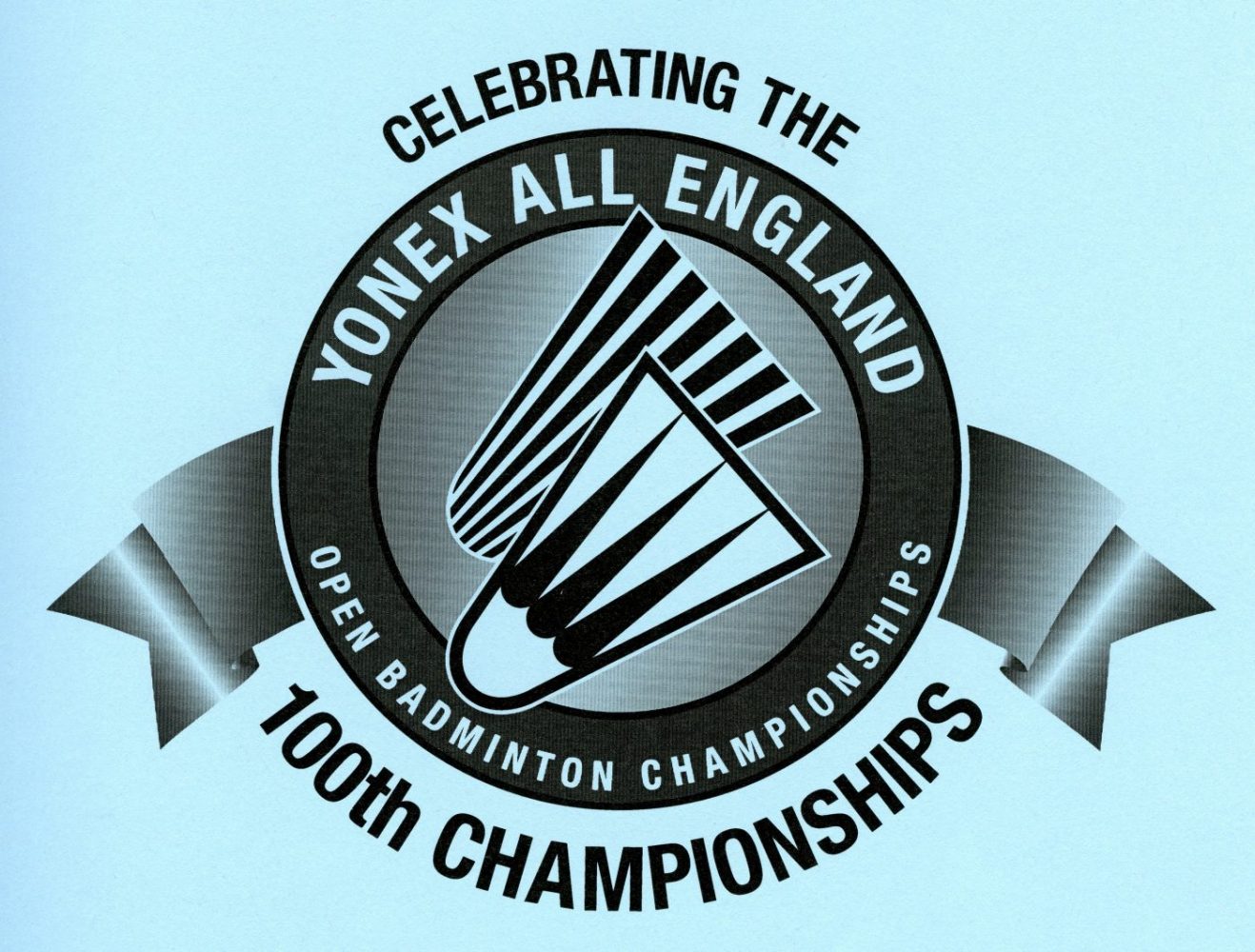
2006 – Lin Dan (China) flying to his second Yonex All-England men’s singles title.
Photos: – Alan Spink – Action Photography
Click on images to enlarge
How they changed the Utilita Arena, Birmingham from an indoor athletics event to the 2007 Yonex All-England Badminton Championships in just over 2 minutes.
In 2013 Tine Baun playing in her last tournament of her magnificent badminton career, made it a hat-trick of Yonex All-England titles by winning the woman’s singles. Tine, the 33-year-old Danish former world number 1, became the oldest All-England champion in the Open era when she defeated an opponent who would have been the youngest champion as she outplayed the 18-year-old Intanon Ratchanok of Thailand.
Click on images to enlarge
Utilita Arena, Birmingham
Photo: – Alan Spink Action Photography
Ever since the first Championships in 1899, it has depended on volunteers performing various duties, umpires, line judges, stewards, shuttle controllers, drivers, hall arena squads, team liaison officers and many more. A modern championship will have nearly 300 volunteers working with the professional Badminton England staff. The photograph above is of some of the volunteers and officials at the 2016 Yonex All-England Championships.
Photo: – Badminton Photo. Click on images to enlarge
2019 Men’s singles final – Kento Momota (Japan) far side v Viktor Axelsen (Denmark). Kento Momoto would win the final 21-11, 15-21, 21-15. to become the first Japanese Yonex All-England men’s singles champion.
Photo: – Alan Spink Action Photography
2021 the year of facemasks and no spectators.
Finals being played with no spectators present.
The exciting finals on the Sunday took six hours to complete, without the noise from the thousands of enthusiastic spectators that normally attend the Championships you could hear every shuttle being struck and the players landing on the sprung floor. All this enhanced the atmosphere for the millions of worldwide fans watching on television, it felt like your armchair was by the side of the court.
Japan would have all six pairs in the doubles finals, guaranteeing them three titles, Nozomi Okuhara winning the woman’s singles gave them their fourth title. Yuta Watanabe would win the men’s and mixed doubles making him the first male player in two decades to win two titles in the same year.
In the men’s singles, sixth seed Malaysian Lee Zii Jia reach the final without losing a game. On the other side of the draw, reigning champion Denmark’s Viktor Axelsen did not have such an easy passage as three out of his four matches were hard-fought three-setters. In the final the first game went the full 59 points with Lee winning the deciding point. The second game was an equally tough match with Axelsen winning it 22-20. All was set for a third and final marathon game, but the Dane faded in the second half allowing the 22-year-old Lee Zii Jia to lift the famous Arthur Barron Silver Challenge Men’s Singles Trophy.
Lee Zii Jia (Malaysia) with the Men’s Singles Arthur Barron Silver Challenge Trophy and runner-up Viktor Axelsen (Denmark).
Lee Zii Jia (Malaysia).
Photos: – Alan Spink Action Photography. Click on the images to enlarge.
2021 Women’s Singles Champion Nozomi Okuhara (Japan).
2021 Yonex All-England Championships Woman’s Doubles L. to R. Sayaka Hirota, Yuki Fukushima (Japan) and Wakana Nagahara and Mayu Matsumoto (Japan).
How did it all begin – Film – The History of the All-England Badminton Championships.
————————————————————-
Visitors are welcome to look around the Museum unescorted at any time – the National Badminton Centre is normally open 9am to 8pm every day.
National Badminton Museum, National Badminton Centre, Bradwell Road, Loughton Lodge,
MILTON KEYNES MK8 9LA
National Badminton Centre – Lodge Hotel
For more information and to book a room go to: – Badminton England website – https://www.badmintonengland.co.uk – National Badminton Centre – National Badminton Centre Hotel.
———————————————–

